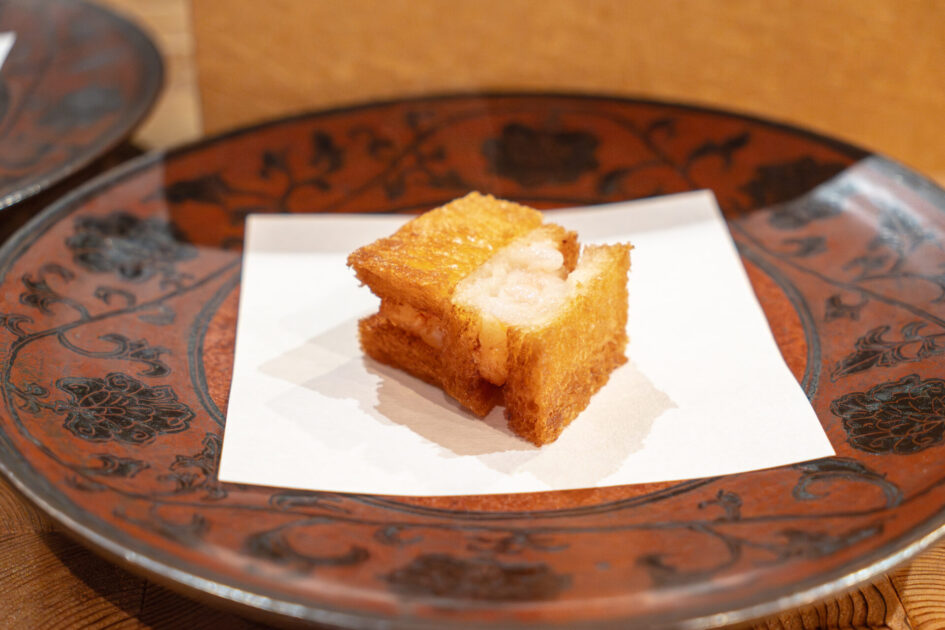CONTENTS
About Tempura Asanuma
Concept
Tucked away on the sixth floor of a building in Nihonbashi, Tempura Asanuma offers a truly unique dining experience—tempura that redefines convention by inviting guests to savor the batter itself.
While many tempura restaurants strive to make the coating as thin as possible to highlight the ingredients, often served simply with salt, Asanuma takes a different approach: here, the batter is the star. The composition of the coating is carefully adjusted for each ingredient, delivering a light yet crisp texture imbued with its own distinct flavor.
Only 100% sesame oil—a blend of daikō (dark roasted) and taihaku (light refined)—is used for frying, achieving a balance of rich aroma and delicate finesse. Every detail matters: from how air is incorporated into the batter, to the precise whipping technique that forms sharp peaks—each aspect showcases a deep commitment to craft.
Particularly noteworthy is the restaurant’s mastery of moisture control. By skillfully evaluating and adjusting for the natural water content of vegetables and seafood, Asanuma maximizes the umami and fragrance of each ingredient through thoughtful preparation.
Served exclusively as an omakase course for both lunch and dinner, the meal unfolds like a quiet narrative—revealing the depth and nuance of tempura. This is a new kind of tempura experience, one that celebrates the conversation between batter and ingredient.
Chef Tsutomu Asanuma: A Young Tempura Artisan Devoted to His Craft
Born in 1994 in Yamagata Prefecture, Tsutomu Asanuma is the young chef-owner of Tempura Asanuma, a rising star in Tokyo’s culinary scene.
At the age of 18, he moved to Tokyo and began his career at the renowned tempura institution Ginza Tenichi. There, he honed his skills at prestigious branches including the Imperial Hotel and Nihombashi Takashimaya locations, where he rigorously mastered the foundations of tempura.
Interestingly, Asanuma didn’t always have a passion for tempura. In fact, he initially didn’t care much for it—until one day, a piece of tempura he tasted at Ginza Tenichi completely changed his perspective. It was a transformative experience that inspired him to pursue the path of a tempura chef.
During his apprenticeship, he not only refined his cooking technique but also developed a sense for the nuanced rhythm of hospitality—learning the delicate timing, gestures, and conversational flow that, much like rakugo (traditional Japanese storytelling), define a memorable dining experience.
In September 2022, he opened his own namesake restaurant, Tempura Asanuma, in Nihonbashi. The restaurant quickly gained acclaim, becoming a sought-after reservation and earning a spot in the Michelin Guide Tokyo 2024—further cementing Asanuma’s place in the culinary spotlight.
Today, he runs the restaurant alongside a female staff member, creating a dynamic two-person team. The pace of the frying and serving, along with the direct interaction over the counter, reflects Asanuma’s distinctive style and presence.
This is the new generation of tempura: sincere, skillful, and deeply resonant. Chef Asanuma’s commitment and craftsmanship leave a lasting impression on all who dine at his counter.
Restaurant Recognition
Since opening its doors in September 2022, Tempura Asanuma has swiftly risen to prominence in the world of tempura, establishing itself as a bright new star in just a few short years.
Its excellence is clearly reflected in numerous accolades and critical acclaim. In 2025, the restaurant was awarded the Silver Prize at the Tabelog Award 2025—a highly competitive honor given to only 151 establishments out of approximately 870,000 across Japan. This remarkable achievement is especially noteworthy given the short time since its debut and the rarity of tempura-specialty restaurants receiving such rapid recognition. That same year, Tempura Asanumawas also selected for the Tempura Top 100 Restaurants 2025, further solidifying its reputation both within and beyond the culinary industry.
The restaurant has also continued to be recognized in the Michelin Guide Tokyo, with its consistent acclaim anchored by Chef Asanuma’s technical mastery, refined sensibilities, and skillfully curated omakase courses.
Built by a young yet remarkably dedicated craftsman, Tempura Asanuma has become an essential destination for those seeking a fresh and innovative tempura experience.

Dining Prelude
Exterior & Entrance
Nestled in a quiet corner of Nihonbashi’s business district, the Odin Nihonbashi Building blends into its surroundings with quiet discretion. Beyond the calm glass doors on the ground floor, an elevator ride to the sixth floor leads you to a small wooden sign warmly lit—subtle yet inviting.
Inside, the space opens up into a soft, serene atmosphere, centered around warm tones of Japanese cedar. From behind a simple white noren curtain, a gentle tension and sense of focus begin to unfold. It feels like stepping slightly away from the bustle of the city—a brief moment of stillness before the experience begins.
Outside the building, a modest directory lists the tenants by floor, with “Tempura Asanuma” quietly included among them. It’s easy to miss at first glance, but once discovered, the quiet sense of exclusivity leaves a lasting impression.
This is a hidden gem that feels like it was meant to be exactly where it is.
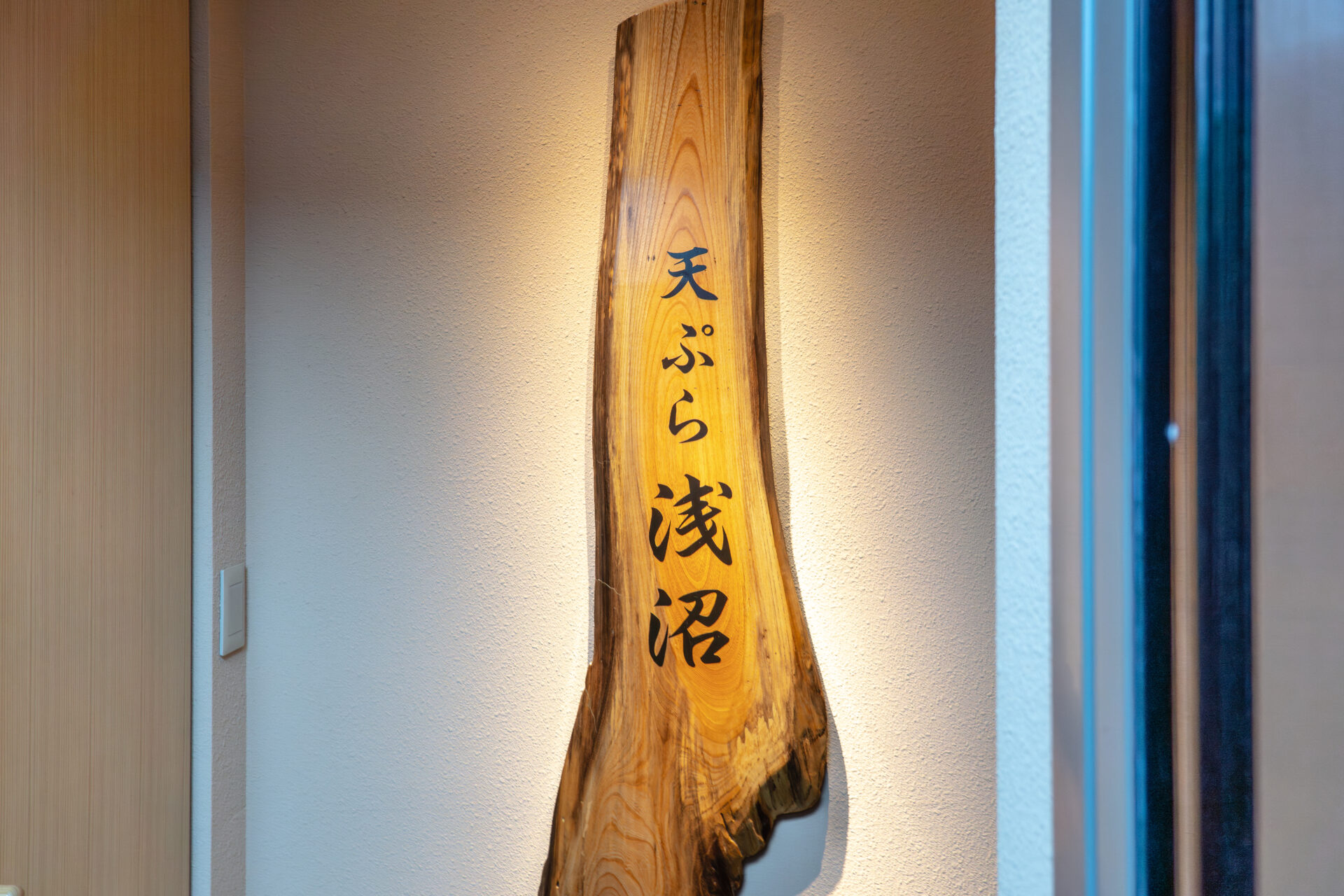
Dining Space
As the door opens, you’re welcomed by a graceful L-shaped counter. Made from wood sourced in Yamagata—Chef Asanuma’s home prefecture—the natural grain and warm hues create a comforting, unpretentious elegance throughout the room.
Chairs upholstered in clean white are aligned neatly, and soft lighting glows at your feet. Gentle daylight filters through lattice windows and ceiling panels, giving the space a different expression between day and night.
The counter accommodates just eight seats, each facing a precisely arranged stainless-steel frying station. This close, nothing is hidden—the sizzle, aroma, steam, and smoke bring the cooking process vividly to life. This immediacy is what makes the experience at Tempura Asanuma so distinct.
Each dish is served on minimalist trays, beautifully composed with an emphasis on balance and negative space. This is a dining experience filled with quietude—a place where time seems to slow down, inviting you to savor every detail.
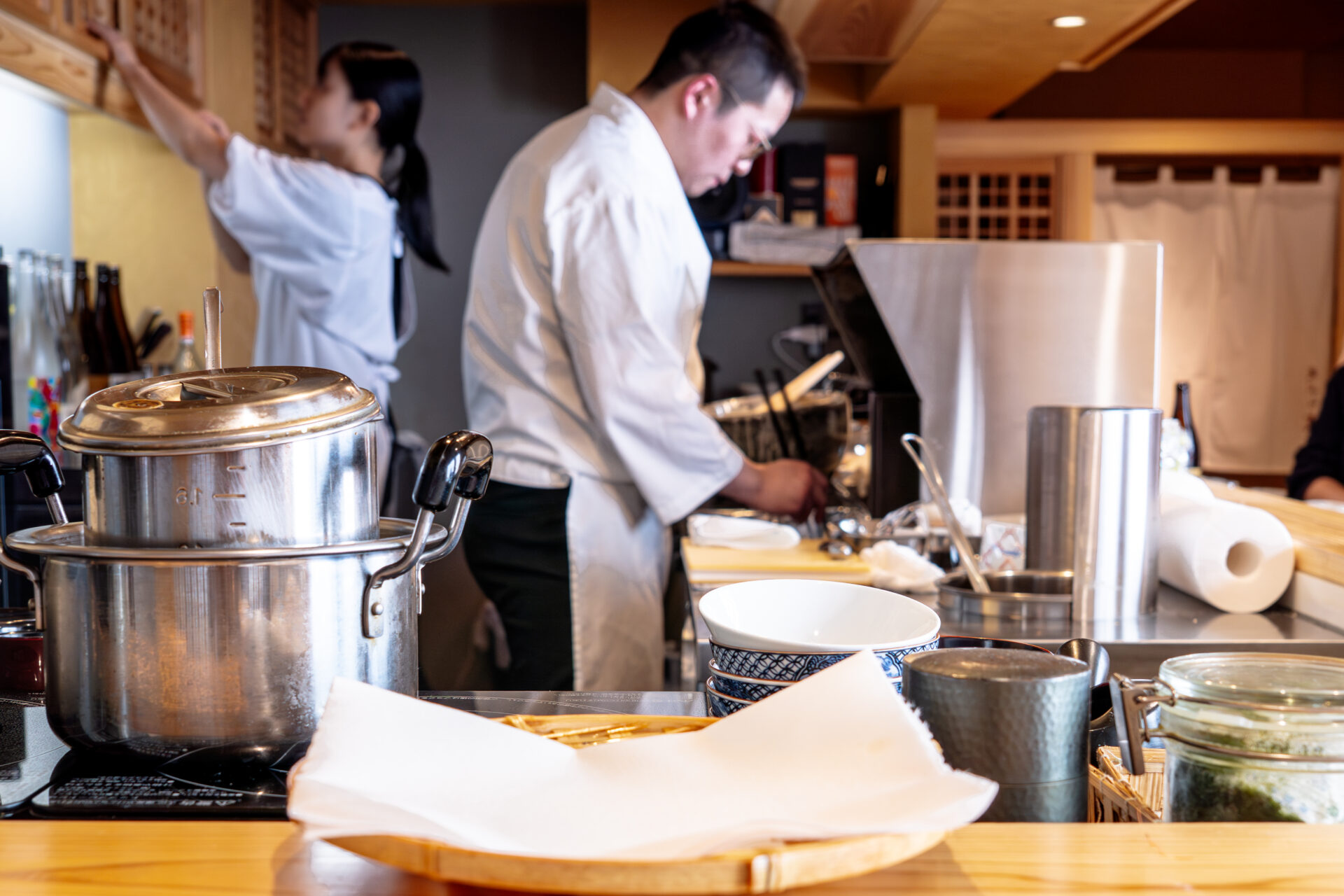
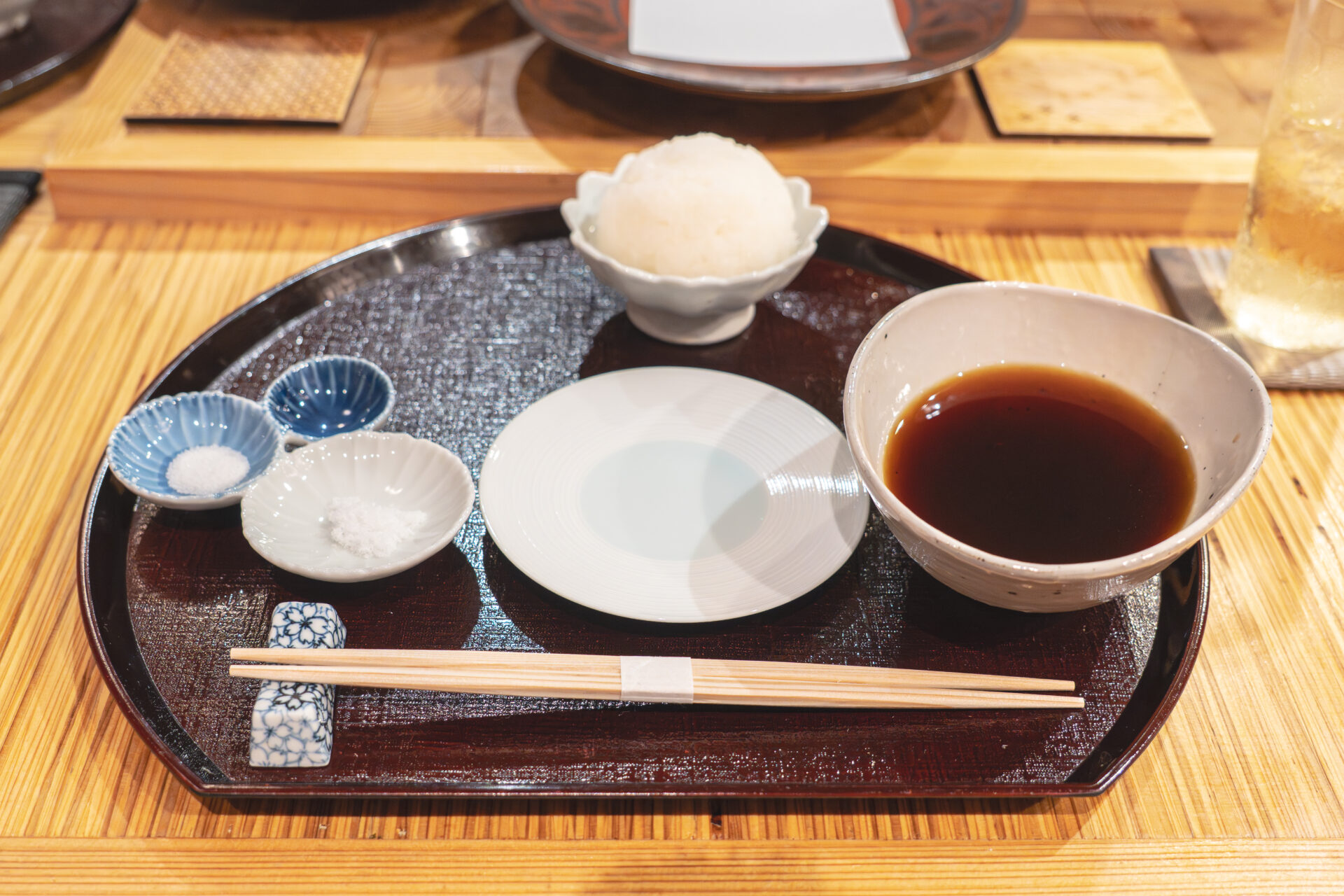
Menu Presentation
From the moment you take your seat at the counter, the day’s ingredients are displayed with care and intention. Seasonal vegetables—such as corn, red eggplant, zucchini, and Yanaka ginger—are delicately arranged in woven baskets. Plates of seafood, including firefly squid and scallops, rest nearby. These ingredients don’t announce themselves loudly, but they speak clearly of the story that is about to begin.
Presented directly in front of you, the ingredients bring an immediate sense of seasonality. Just before frying, each item is lightly prepped, coated in batter, and served fresh with its aroma still rising—an immersive experience engaging all five senses, and a hallmark of the Tempura Asanuma style.
There’s no overdone theatrics here—just the quiet strength of the ingredients on display. The presentation itself becomes a form of storytelling, grounded in Chef Asanuma’s aesthetic: to face each ingredient sincerely, and to elevate the very act of frying into something beautiful.
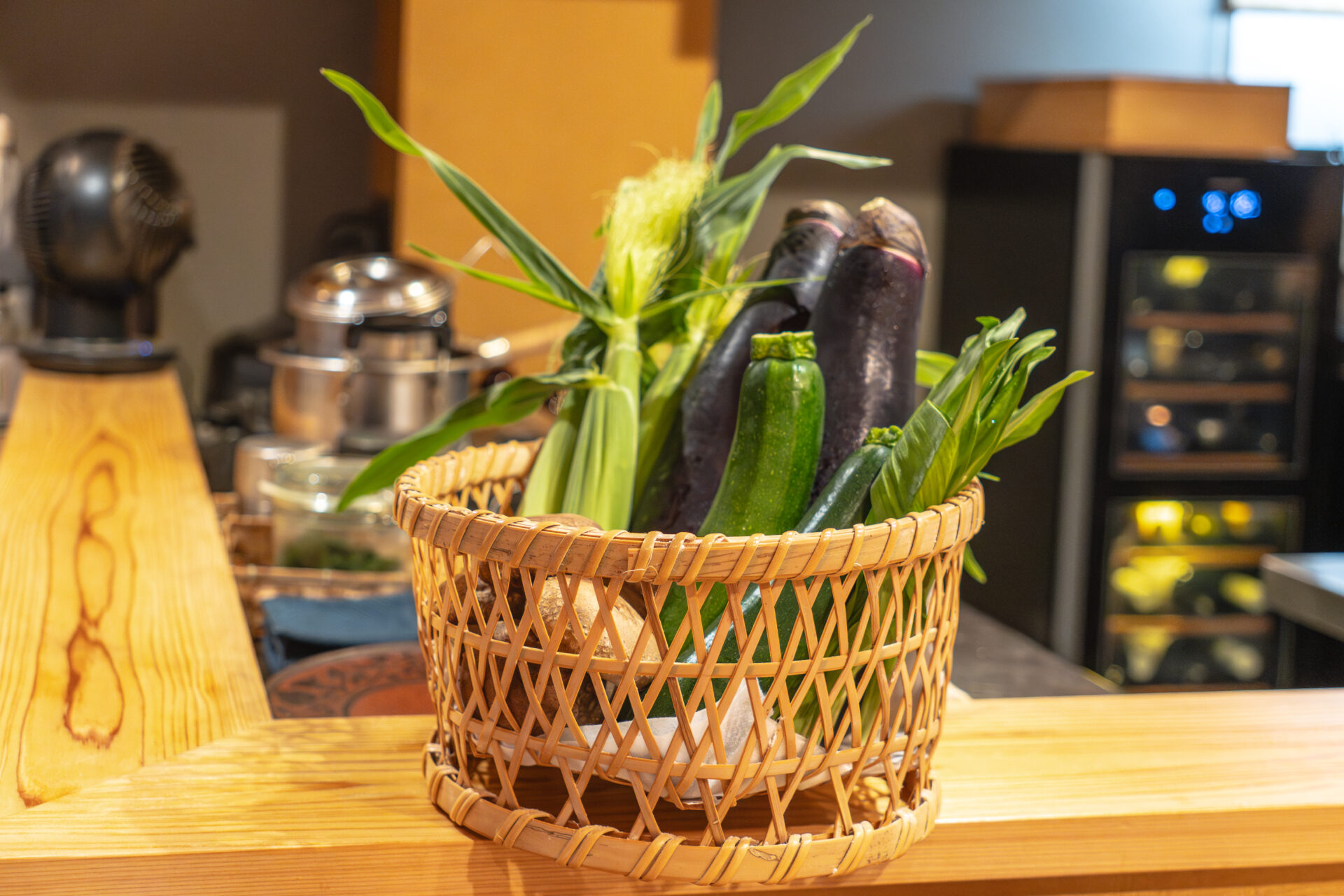
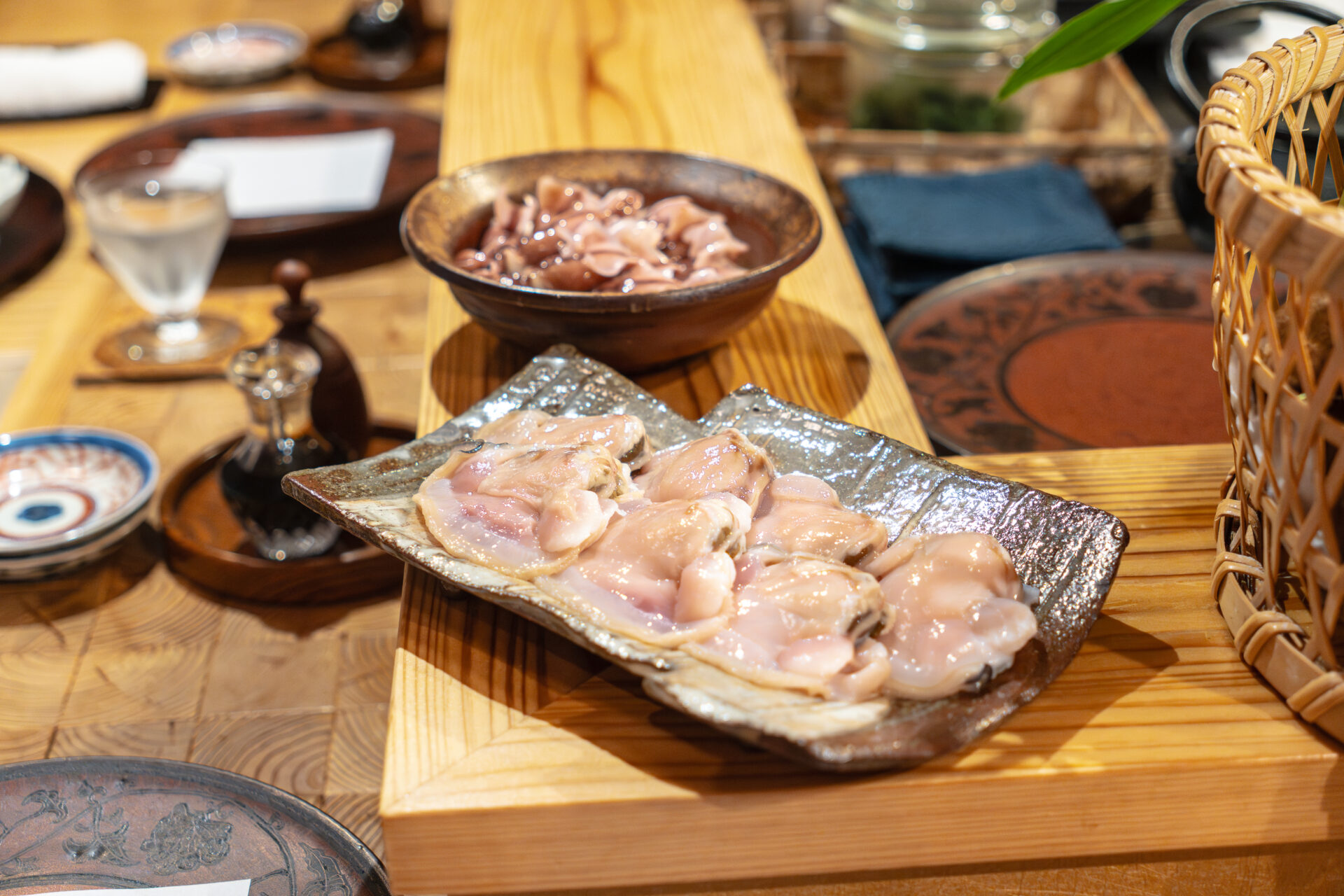
The Tasting Experience
A Classic Beginning: Hatoshi
The meal begins with hatoshi, a signature dish and a hallmark of the restaurant. This bite-sized treat features a layer of minced shrimp sandwiched between slices of bread and deep-fried to perfection. Crisp on the outside and tender on the inside, it’s a deceptively simple dish that speaks volumes of Chef Asanuma’s technique and sensibility.
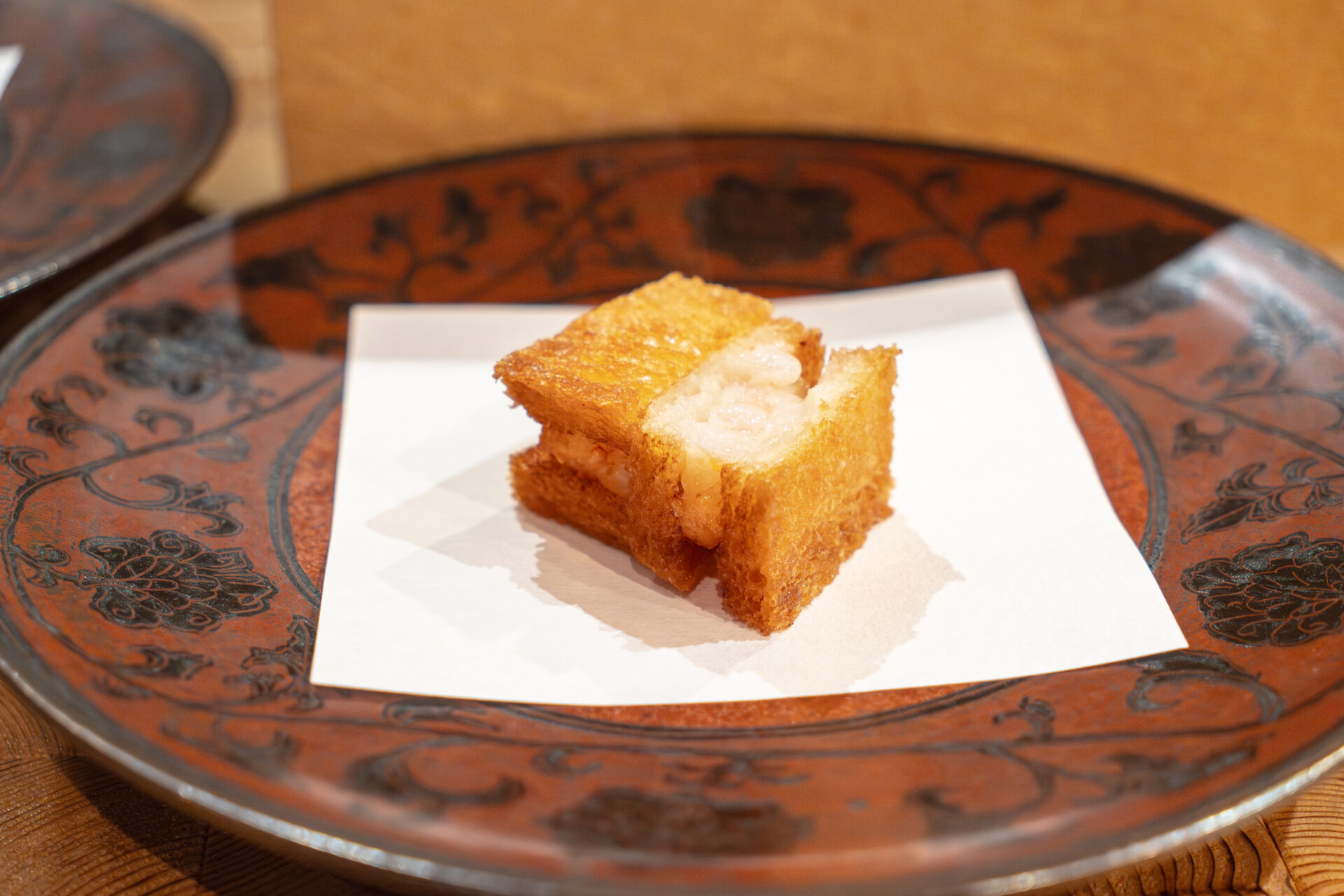
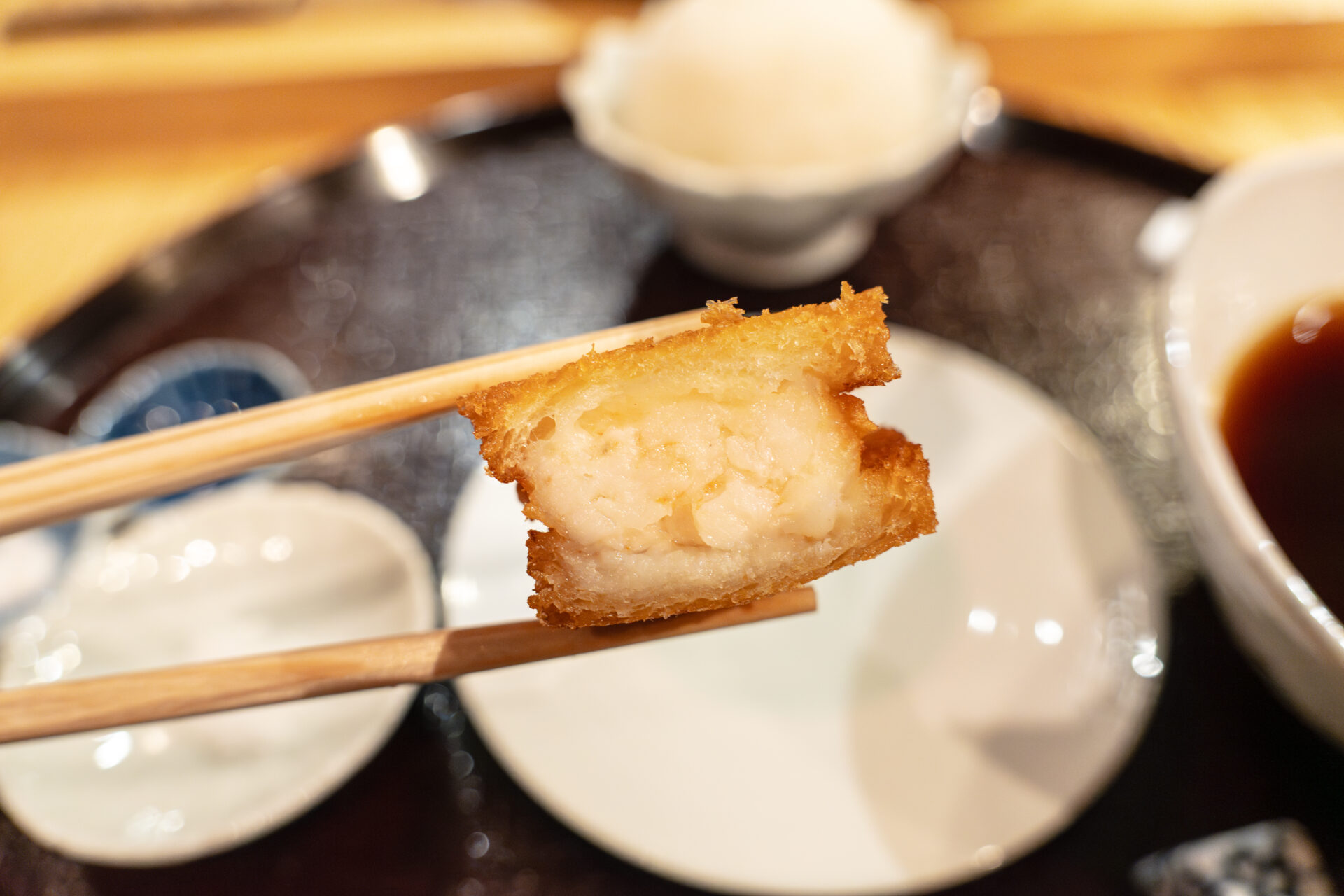
Two Kuruma Ebi, Two Expressions
Next come two pristine kuruma ebi (Japanese tiger prawns), each presented with a different approach.
The first is served with salt, showcasing the sweetness and plumpness of the flesh, perfectly complemented by the aromatic crisp of the batter.
The second is enjoyed with tentsuyu dipping sauce and grated daikon, offering a lighter, more refreshing contrast—two expressions of the same ingredient.
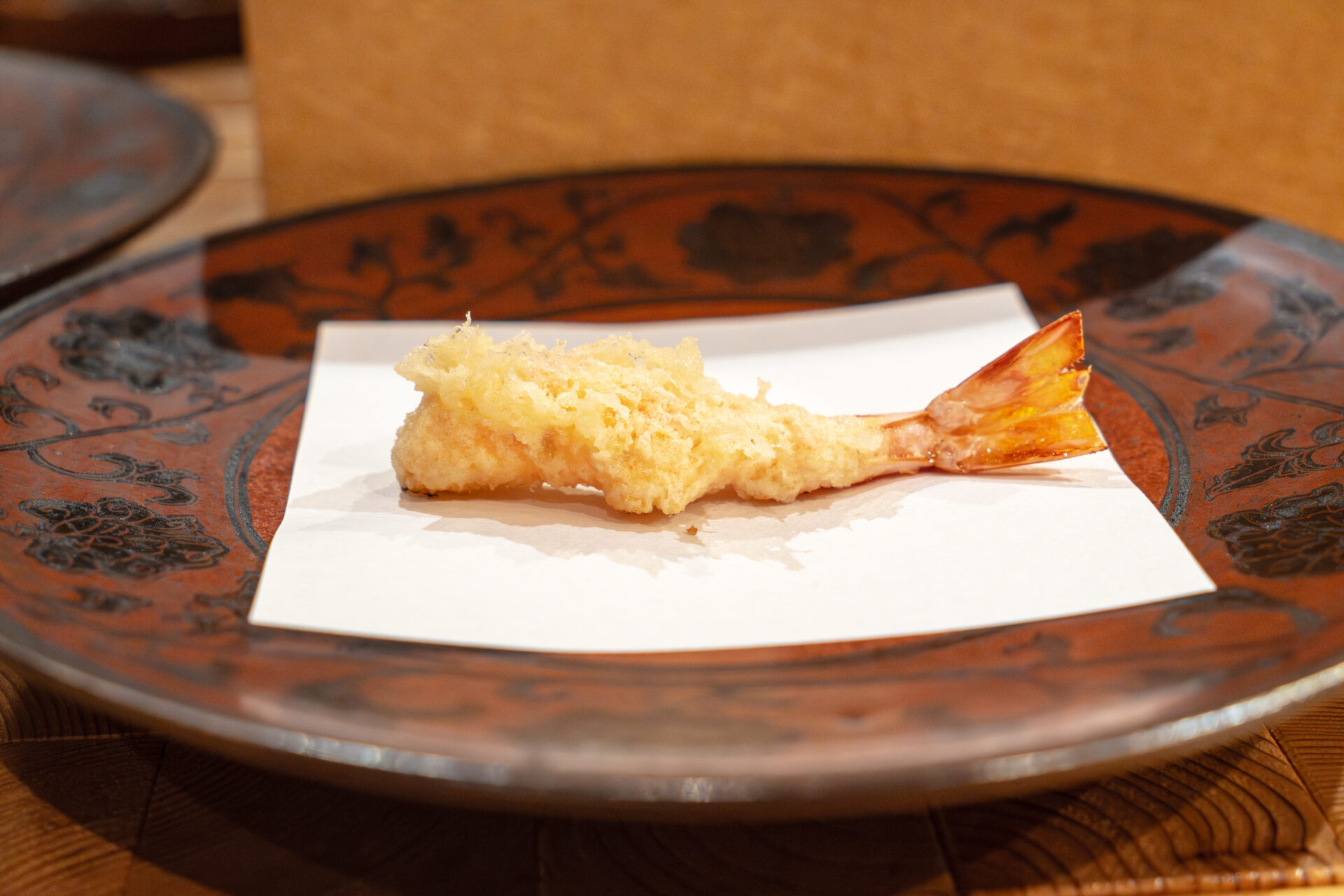
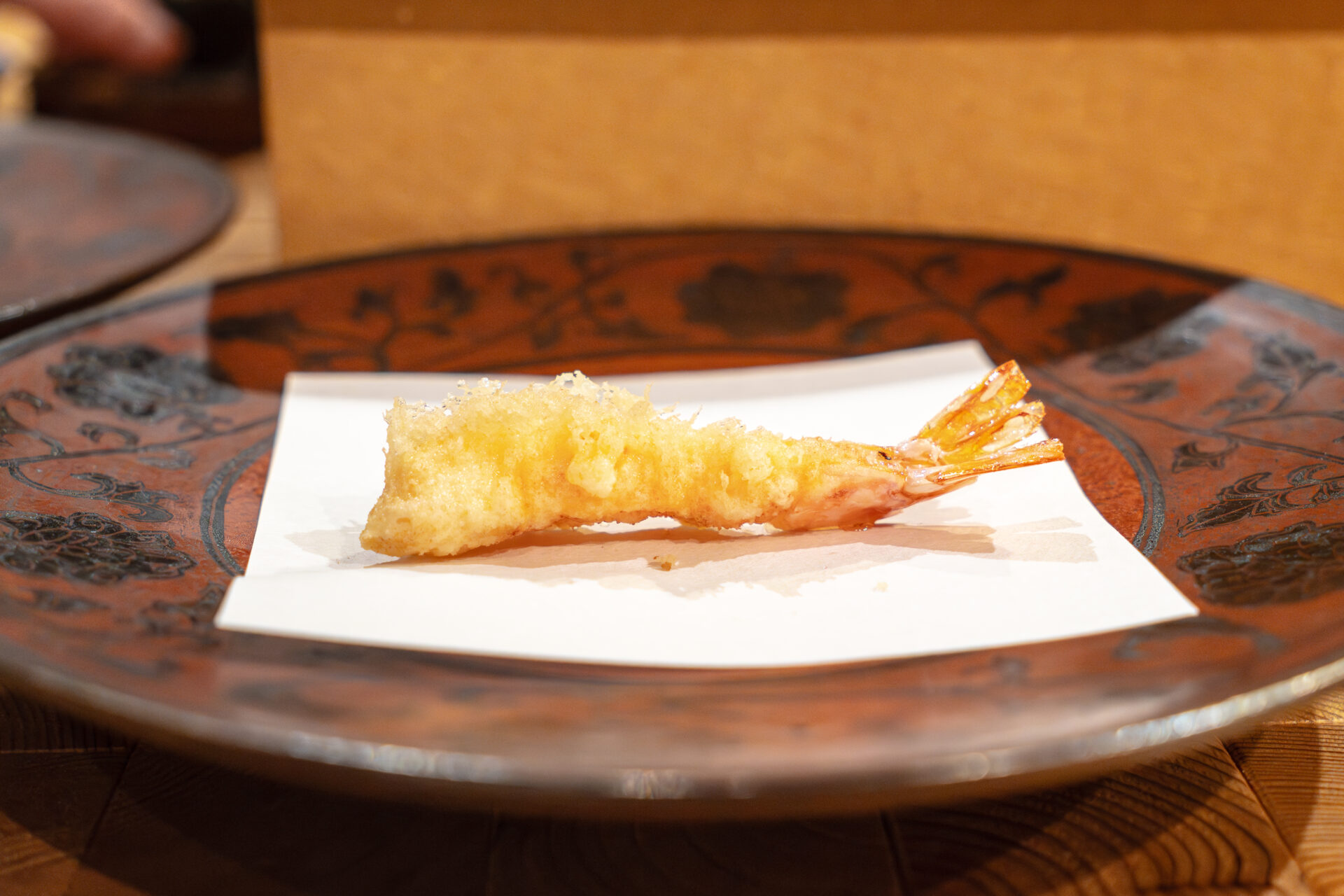
Aka-Nasu (Red Eggplant)
The red eggplant arrives split in half, releasing a cloud of steam as it’s served. Its center is molten and creamy, with an impressive amount of natural moisture. A compelling dish that reveals the power of vegetables when treated with respect.
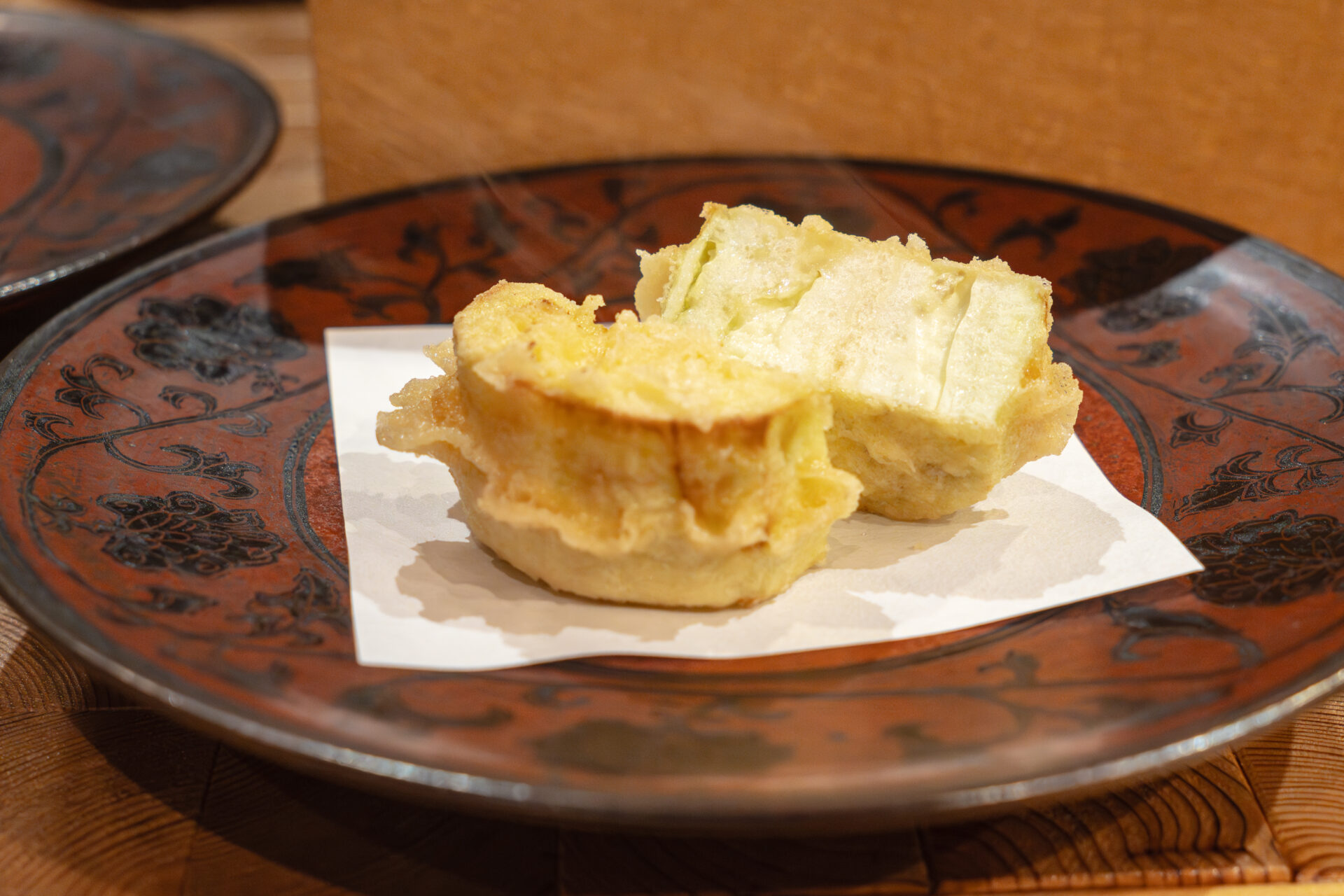
Kisu (Japanese Whiting)
The kisu fillet is enveloped in a delicate coating, revealing soft white flesh inside. It melts gently on the tongue, delivering an elegant richness. Paired with tentsuyu and grated daikon, the slight sweetness of the fish is balanced for a clean, lingering finish.
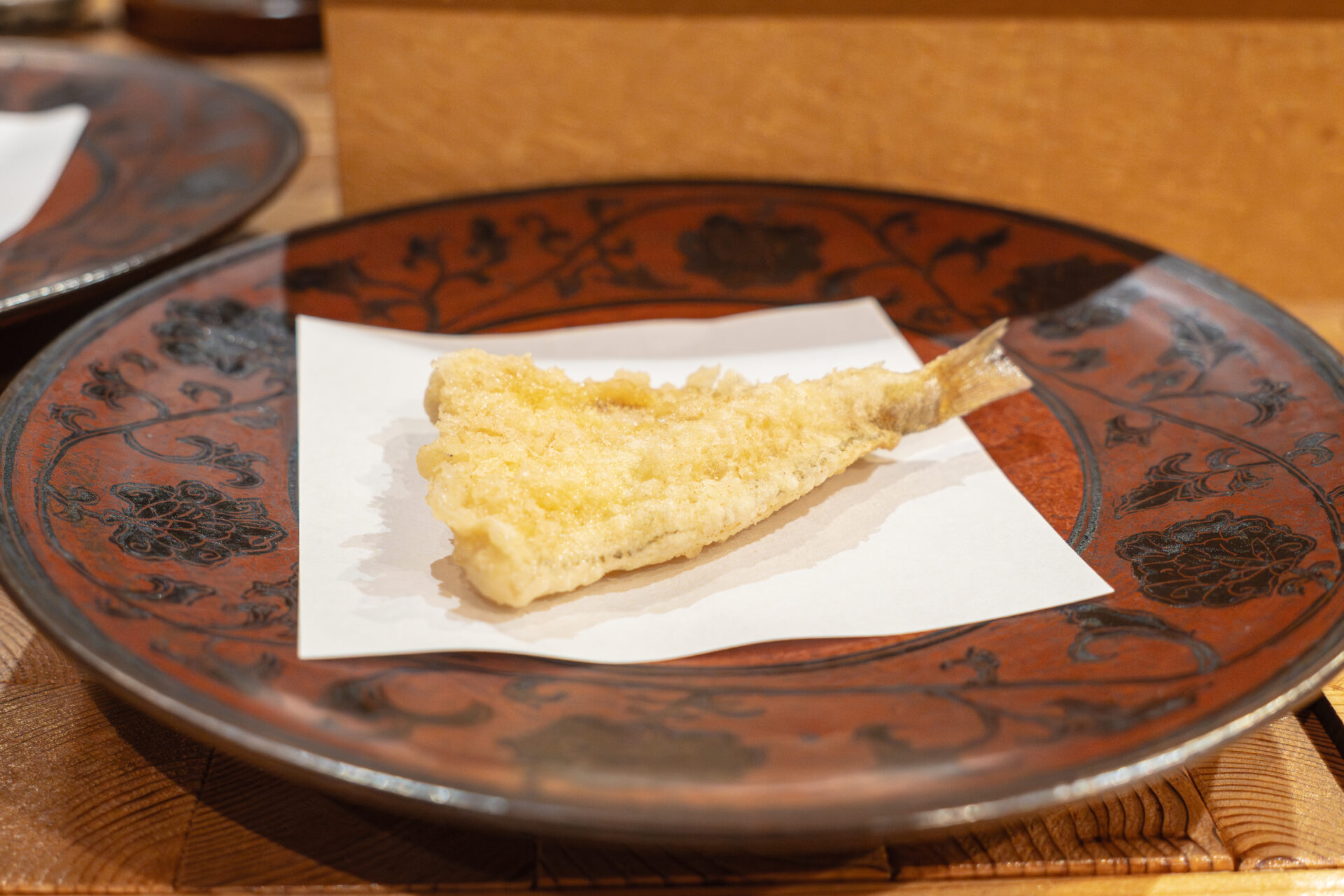
Shiitake Mushroom
A thick-cut shiitake is finished with a quick dash of soy sauce after frying. The juicy cap absorbs the seasoning, offering rich umami without any additional garnish. A minimalist dish where the strength of the ingredient is enhanced by restraint.
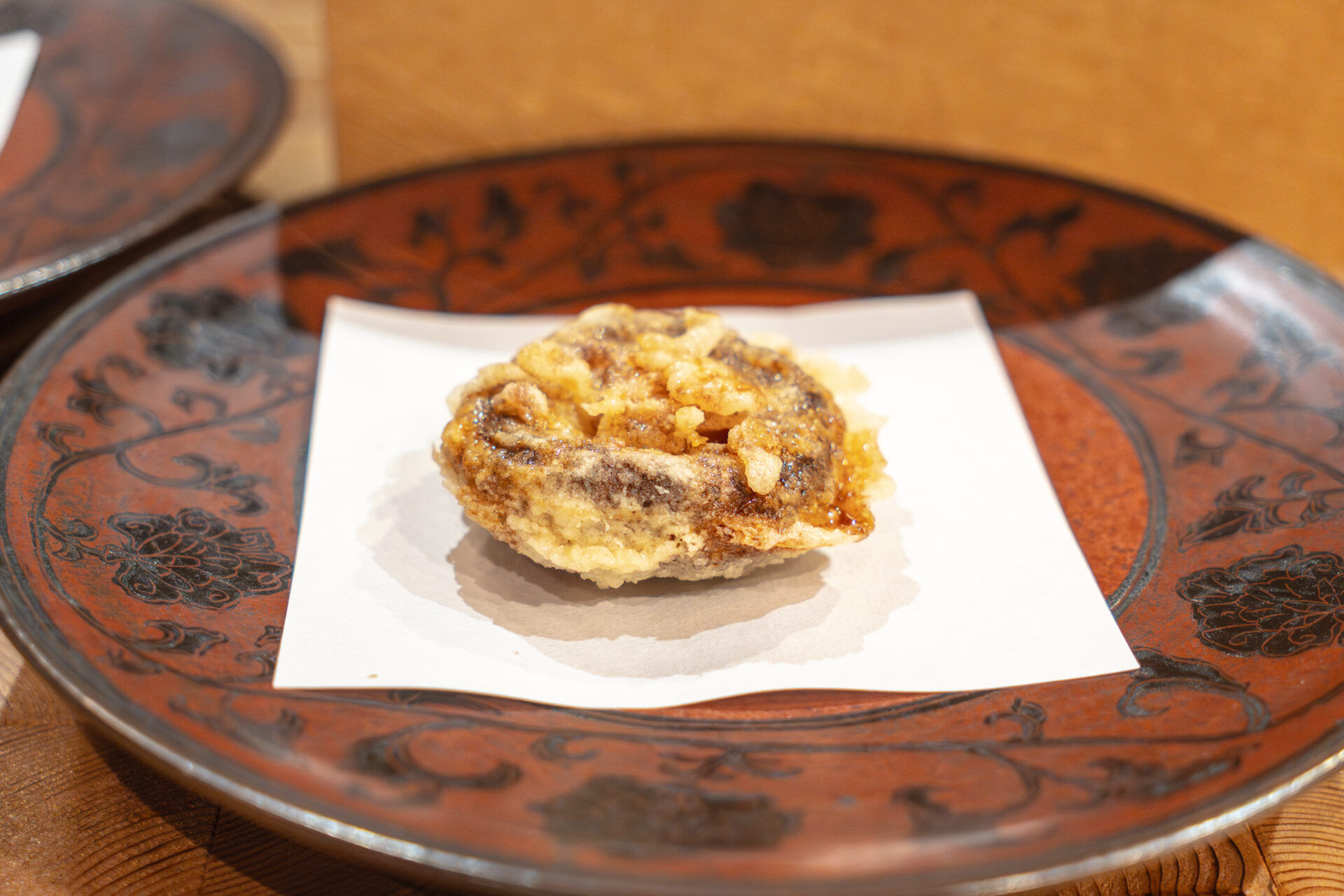
Hamaguri (Clam)
Seasonal hamaguri is cooked just right—plump and juicy, releasing layers of briny, deep umami as you chew. A touch of soy sauce and a sprinkle of kuro-shichimi (black seven-spice blend) provide a complex aroma, making it a distinctly Asanuma-style creation.
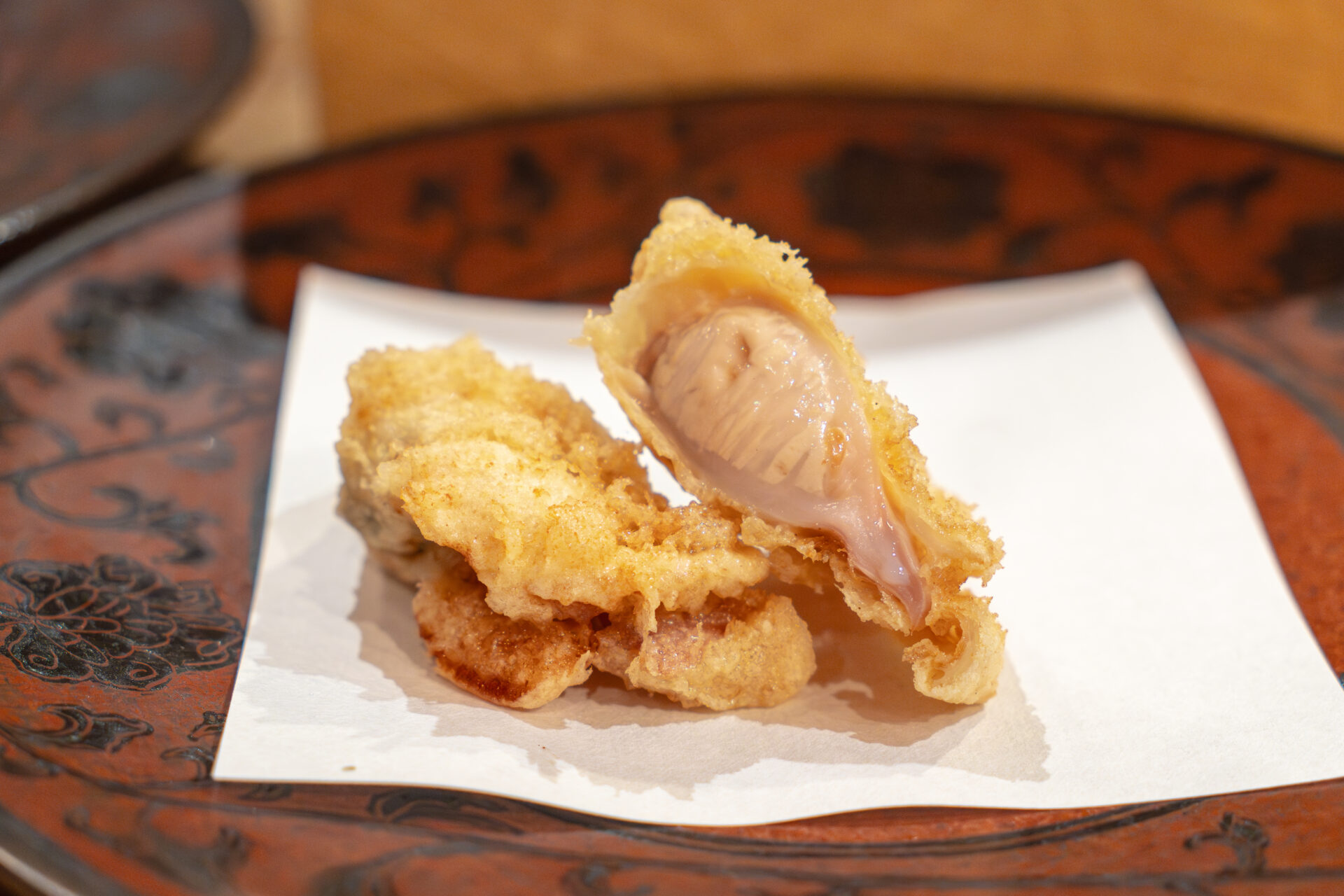
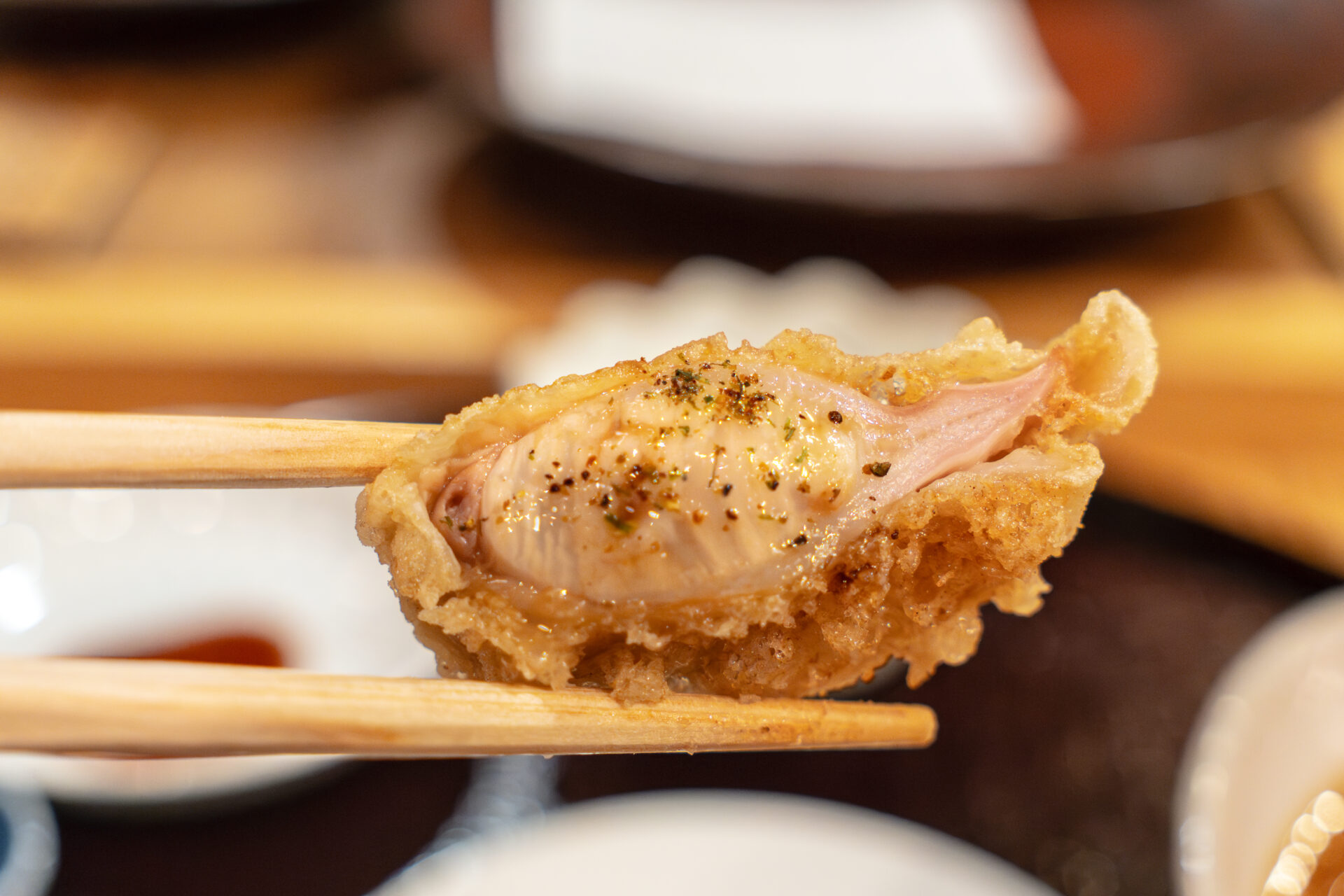
Young Corn with Silk Intact
The young corn is served with its silky threads still attached and lightly fried. The moment you bite in, a gentle sweetness emerges, followed by a hint of roasted flavor. Its rustic appearance belies a deeply nuanced taste.
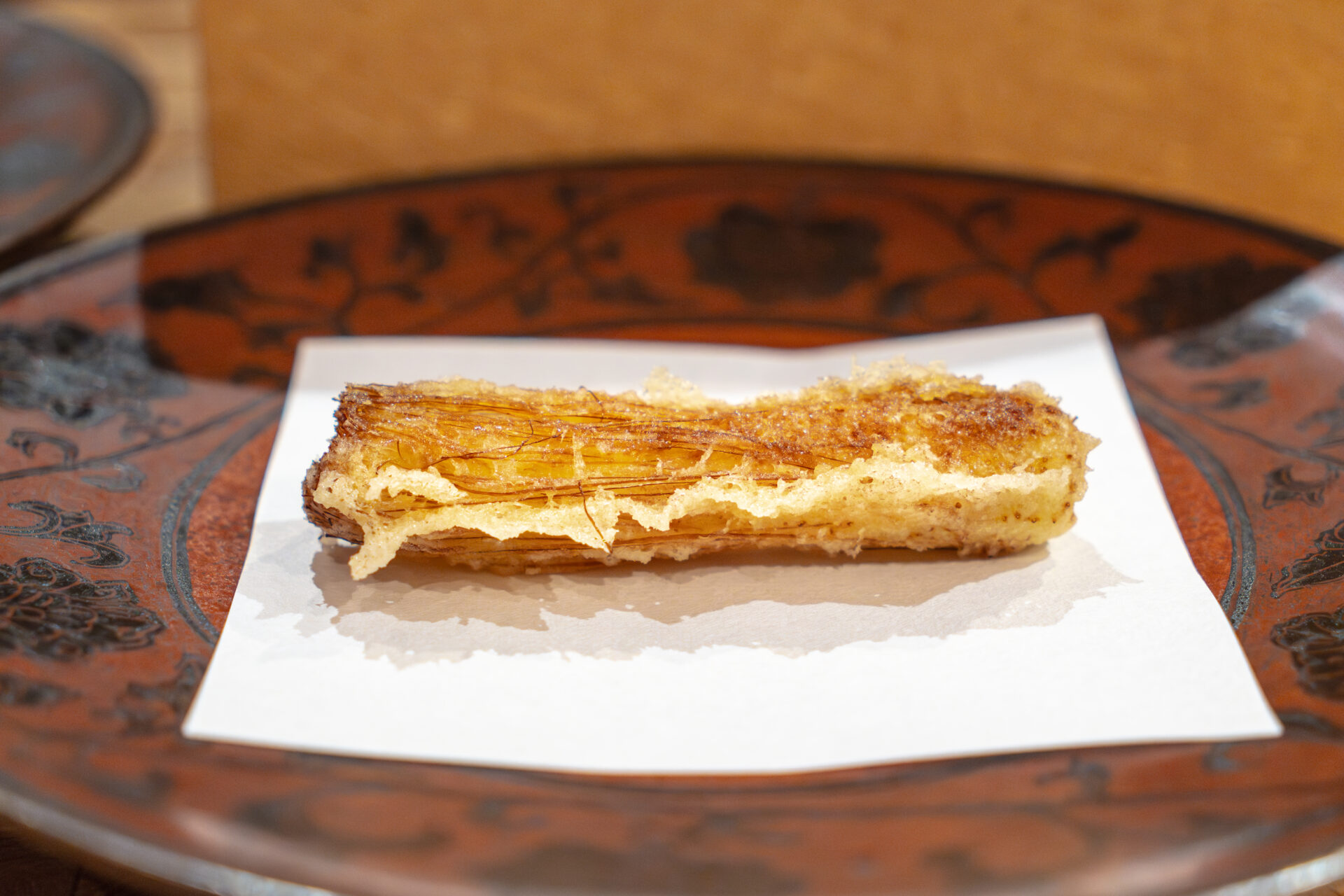
Zucchini
Piping hot zucchini, encased in a thin, crisp shell, arrives almost too hot to touch. The interior bursts with moisture and sweetness, enhanced by a pinch of flavored salt. A simple preparation that highlights the ingredient’s natural allure.
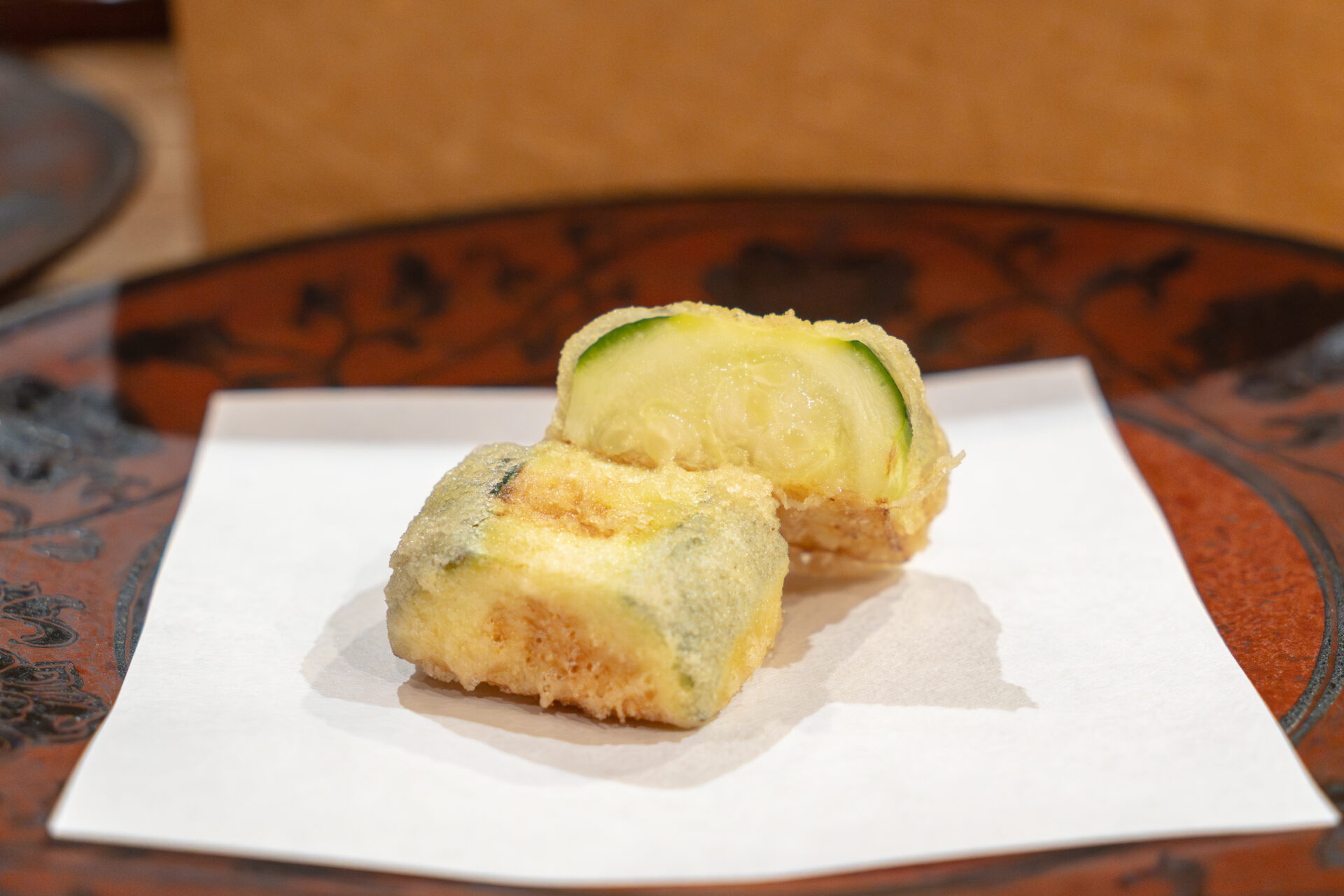
Firefly Squid (Hotaru Ika)
Lightly fried hotaru ika (firefly squid) offers a rich bite—the creamy innards spread across the palate with a savory depth, layered with soy sauce aroma and a tingle of kuro-shichimi. A fleeting taste of spring, framed by Asanuma’s minimalist approach.
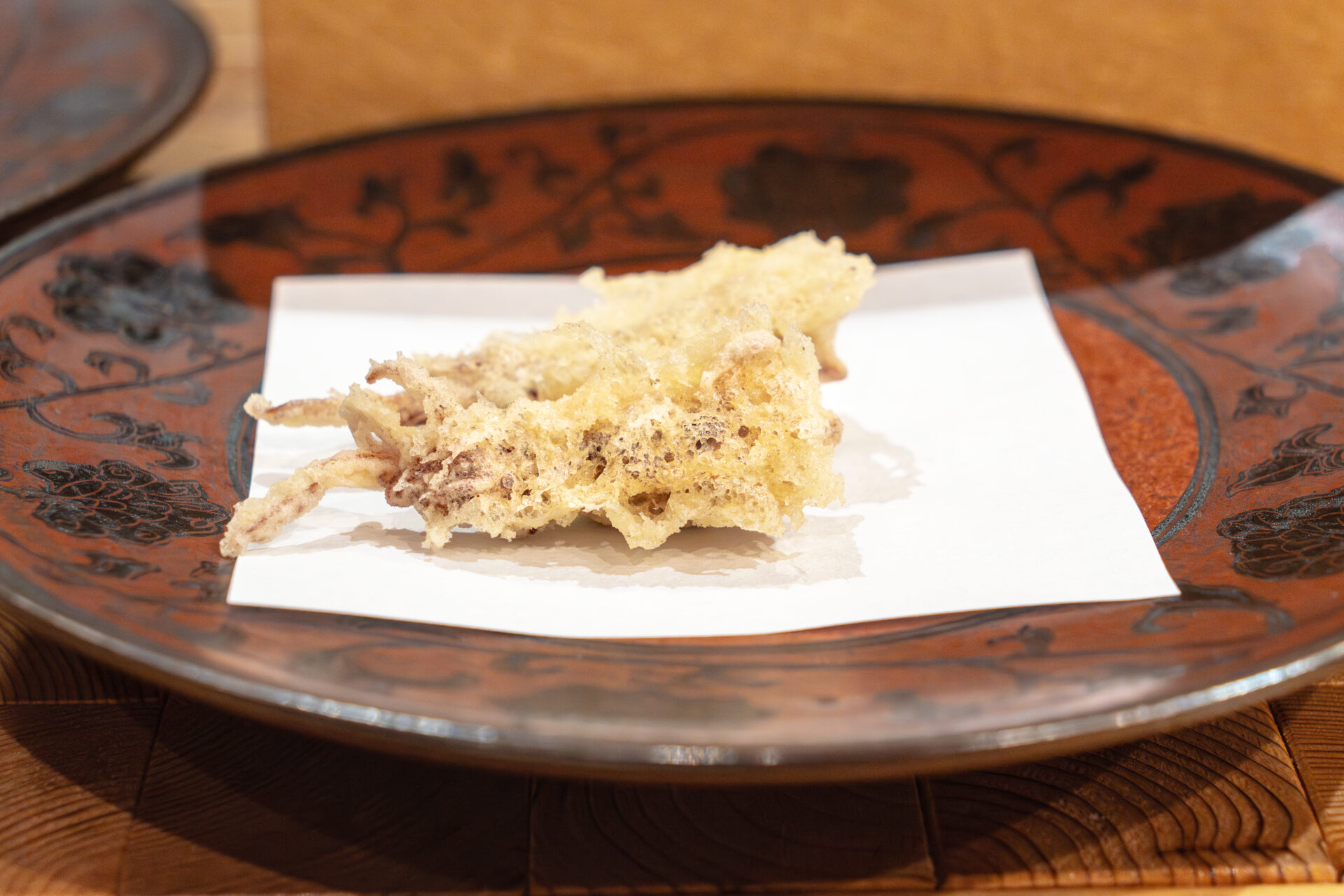
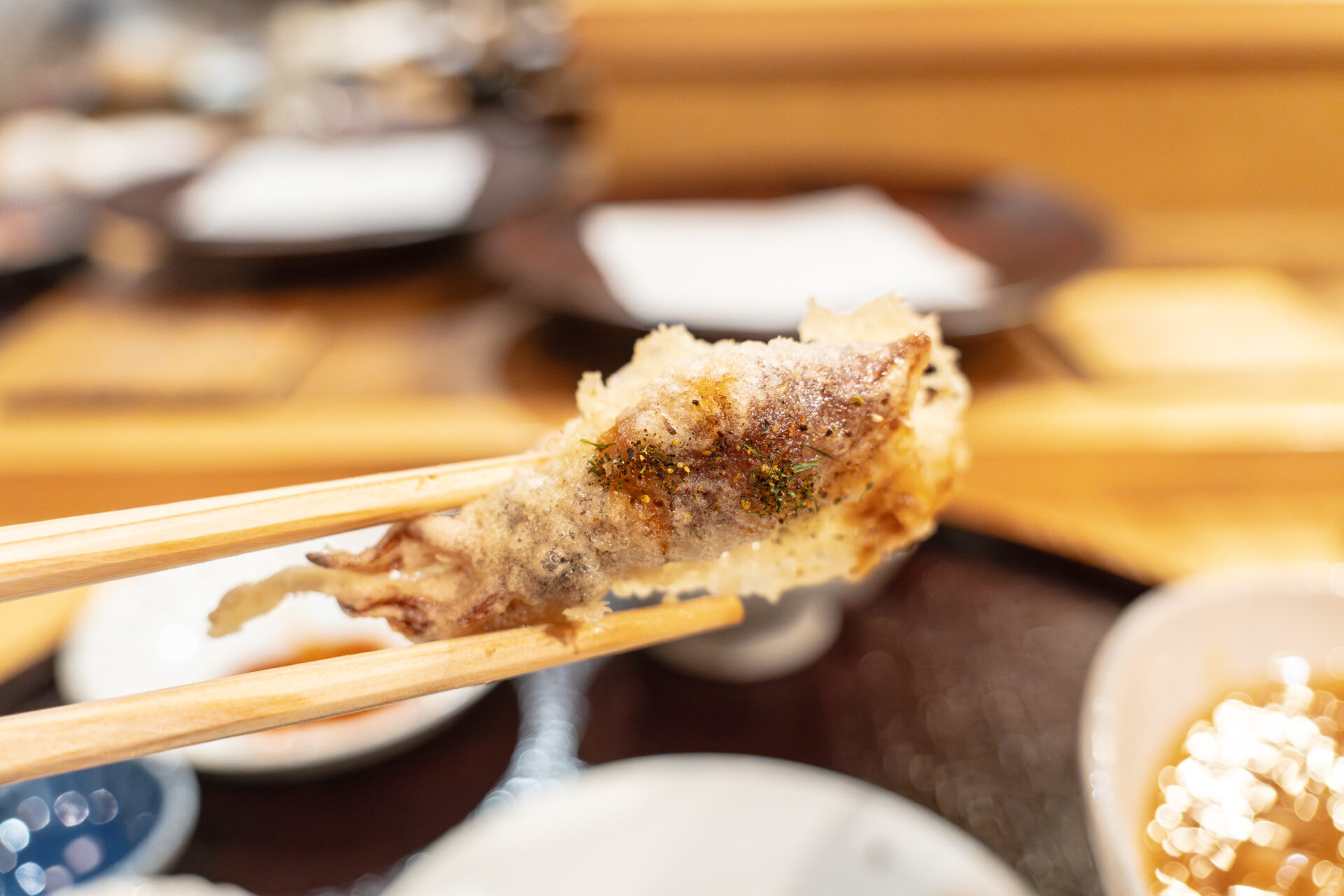
Scallop Wrapped in Nori
A plump scallop wrapped in seaweed, reminiscent of isobe-age, arrives gently rare in the center. The sweetness of the shellfish pairs harmoniously with the briny scent of the nori. Served directly over the counter, it’s a warm, fragrant moment shared with the chef.
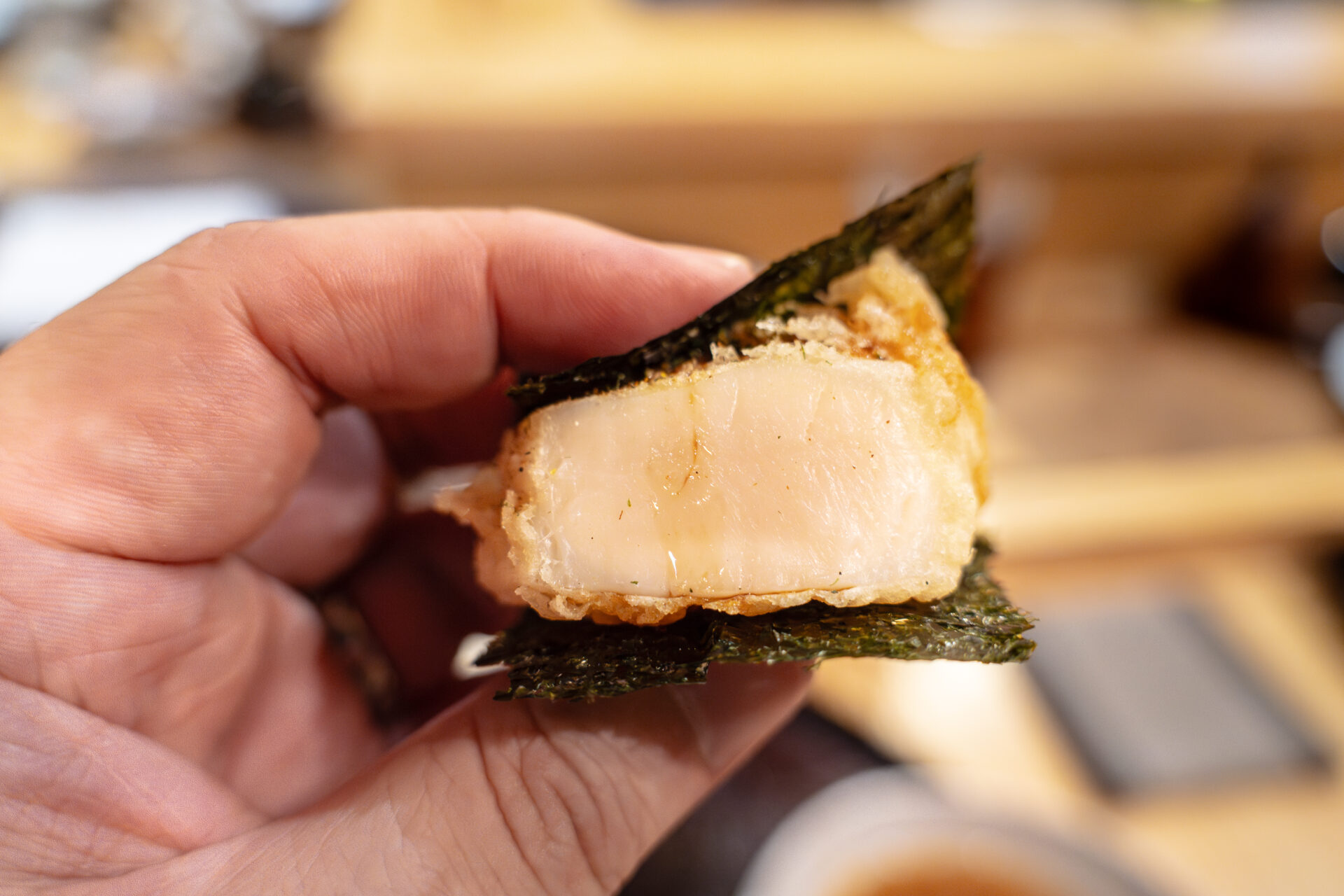
Yurine (Lily Bulb)
A highlight of the course, the yurine has been aged for four months to draw out its sweetness. Most of its moisture has been removed, yielding a crumbly texture that dissolves into rich, concentrated natural sugars. A labor-intensive and deeply memorable dish.
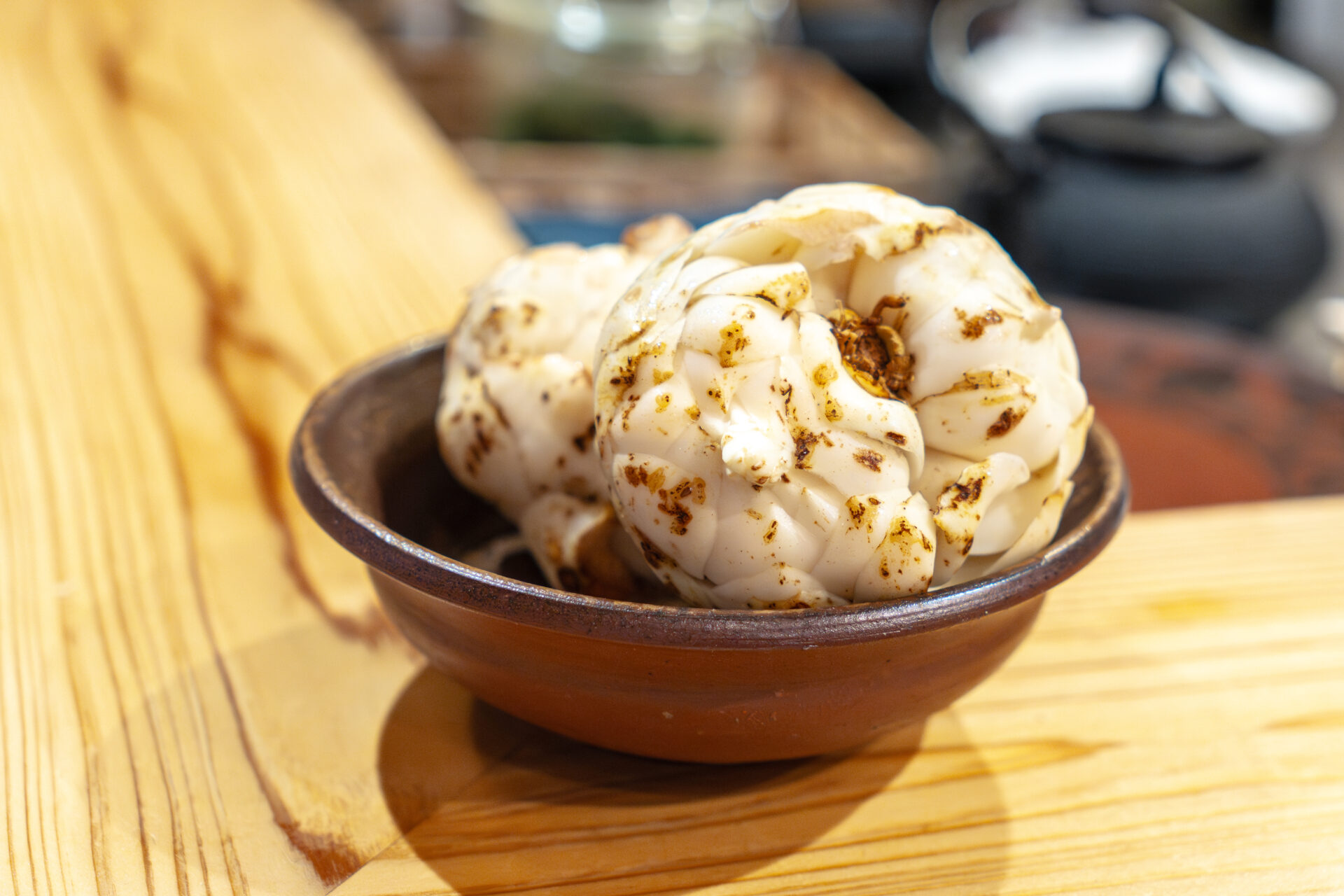
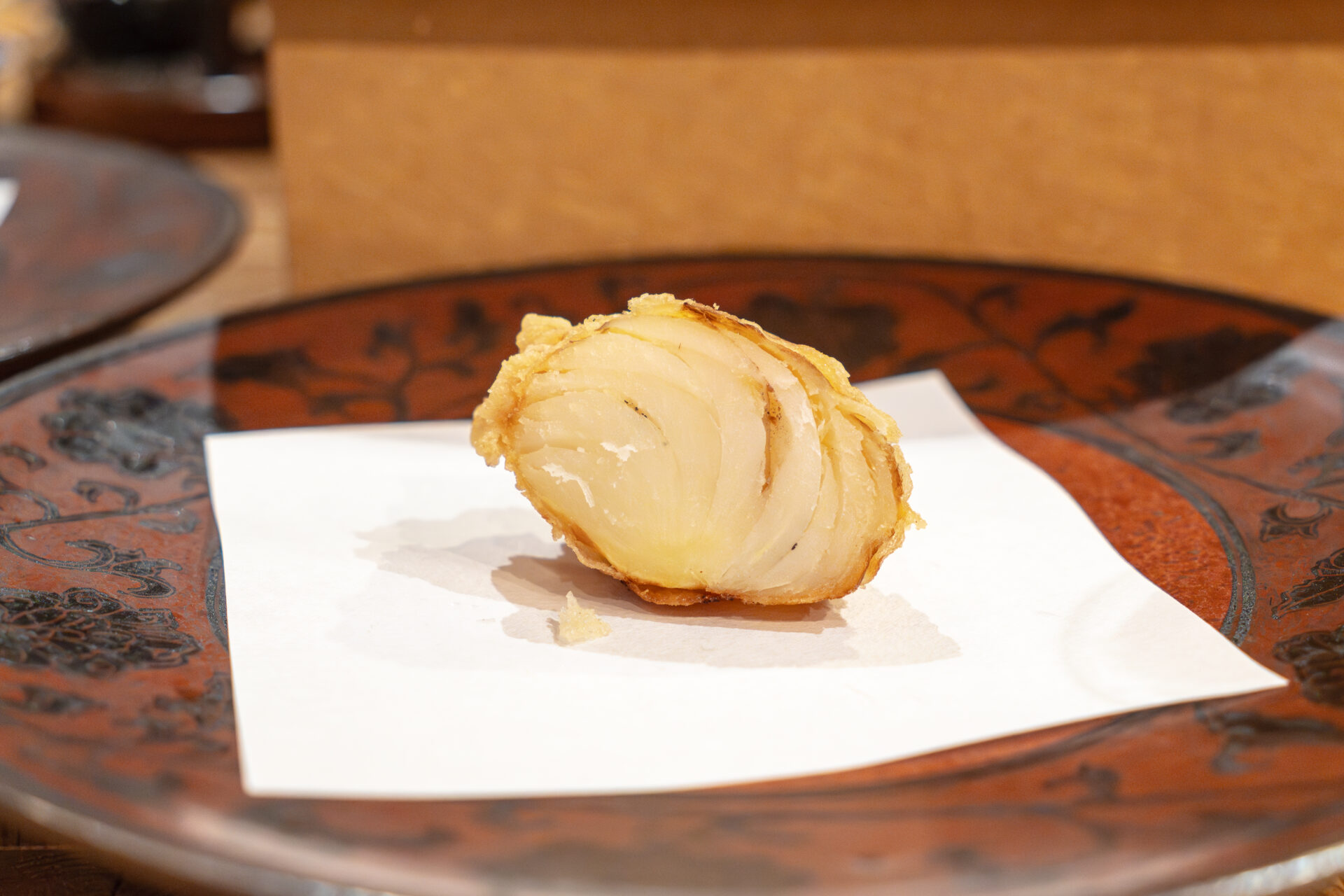
Anago (Sea Eel)
The finale of the savory course is anago, served as a whole piece and sliced before your eyes. The sound of the knife, the rising steam, and the aroma all engage the senses. The fluffy flesh and crisp batter come together for a perfectly balanced, lasting impression.
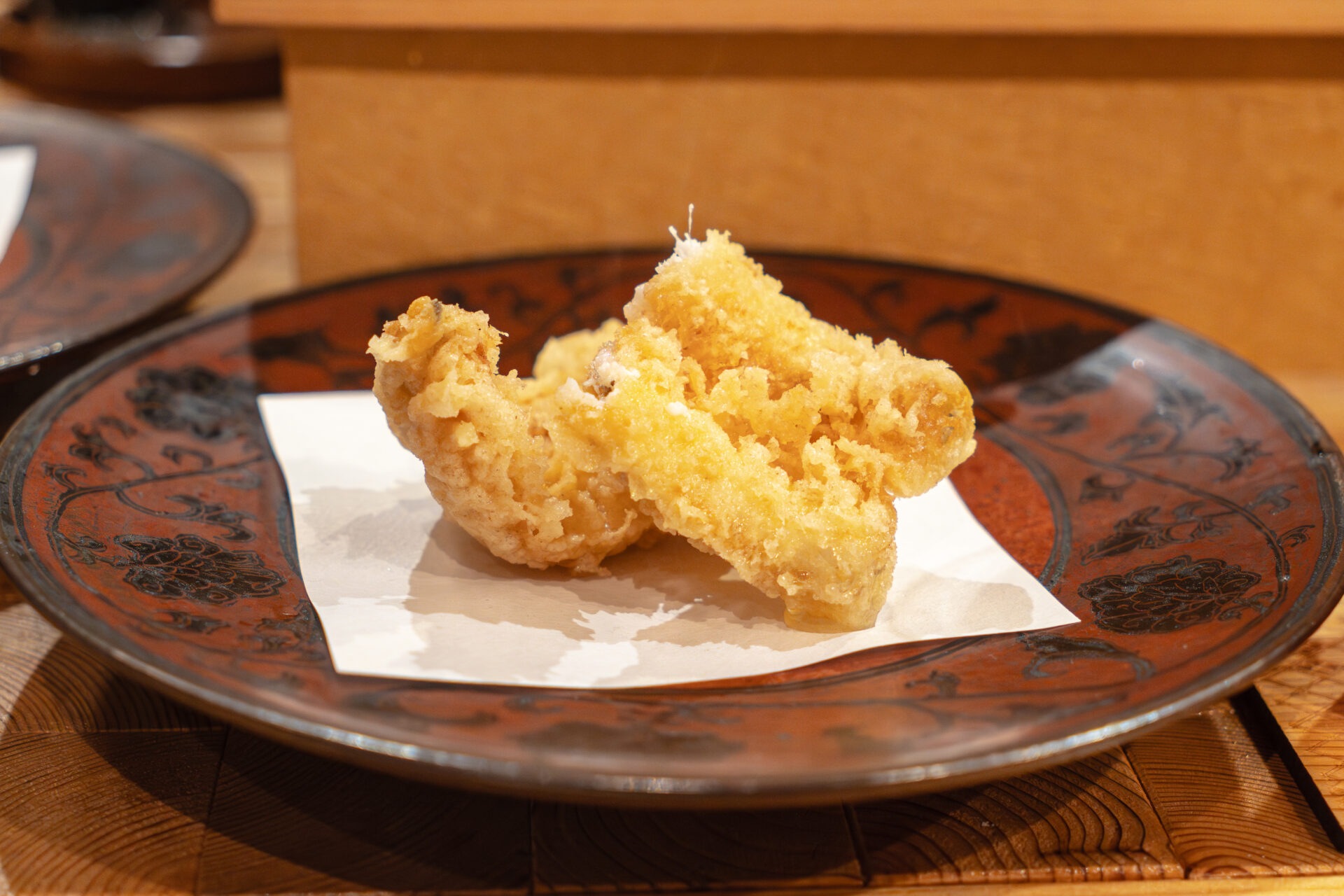
Final Course: Rice Dishes
To close the meal, guests choose from three rice options: classic tendon (tempura over rice), egg tendon, or a seaweed roll with spicy mentaiko (cod roe).
The classic tendon features a sweet and savory sauce that clings to the crispy tempura.
The egg tendon is gentler, with a rich yolk that blends into the rice.
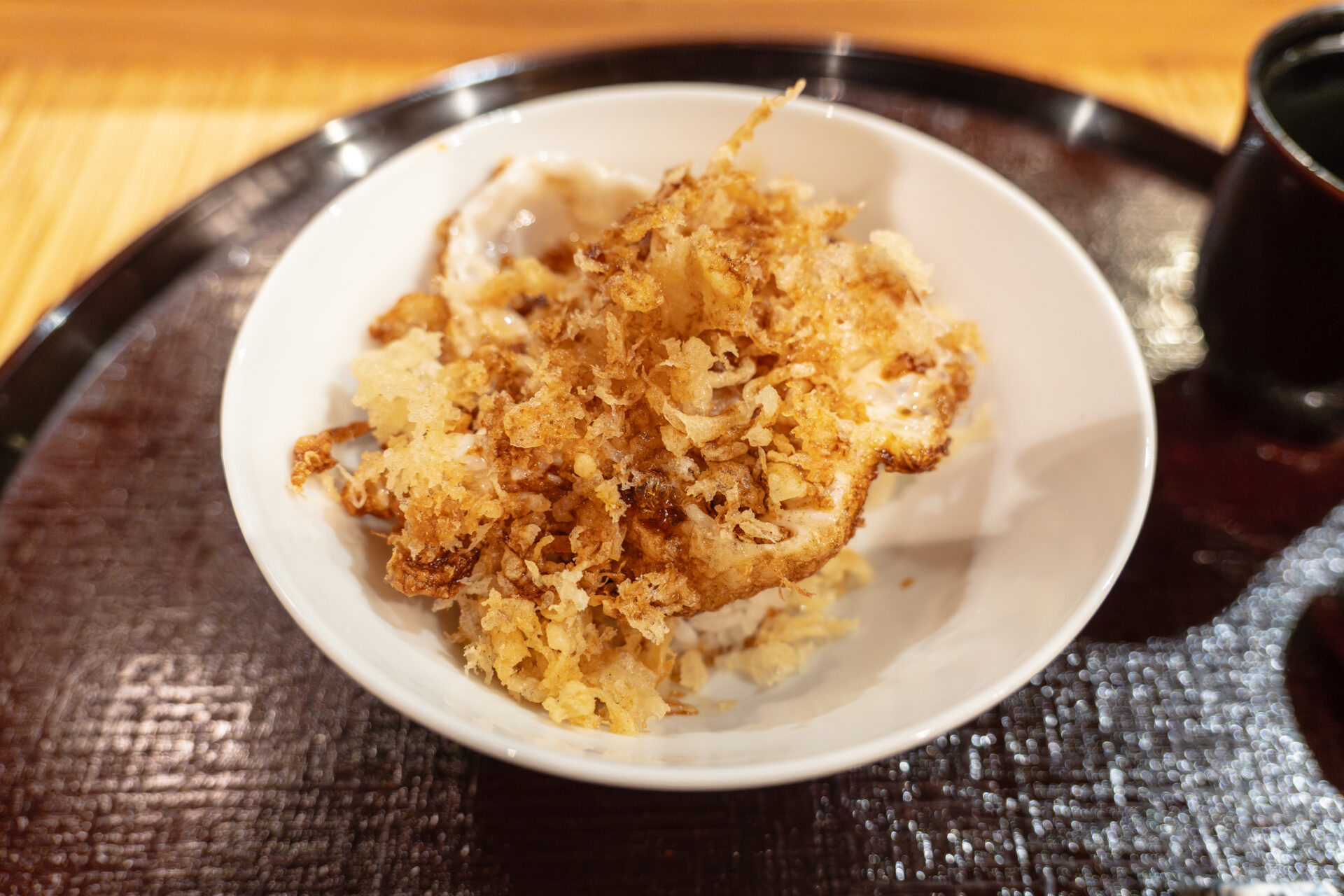
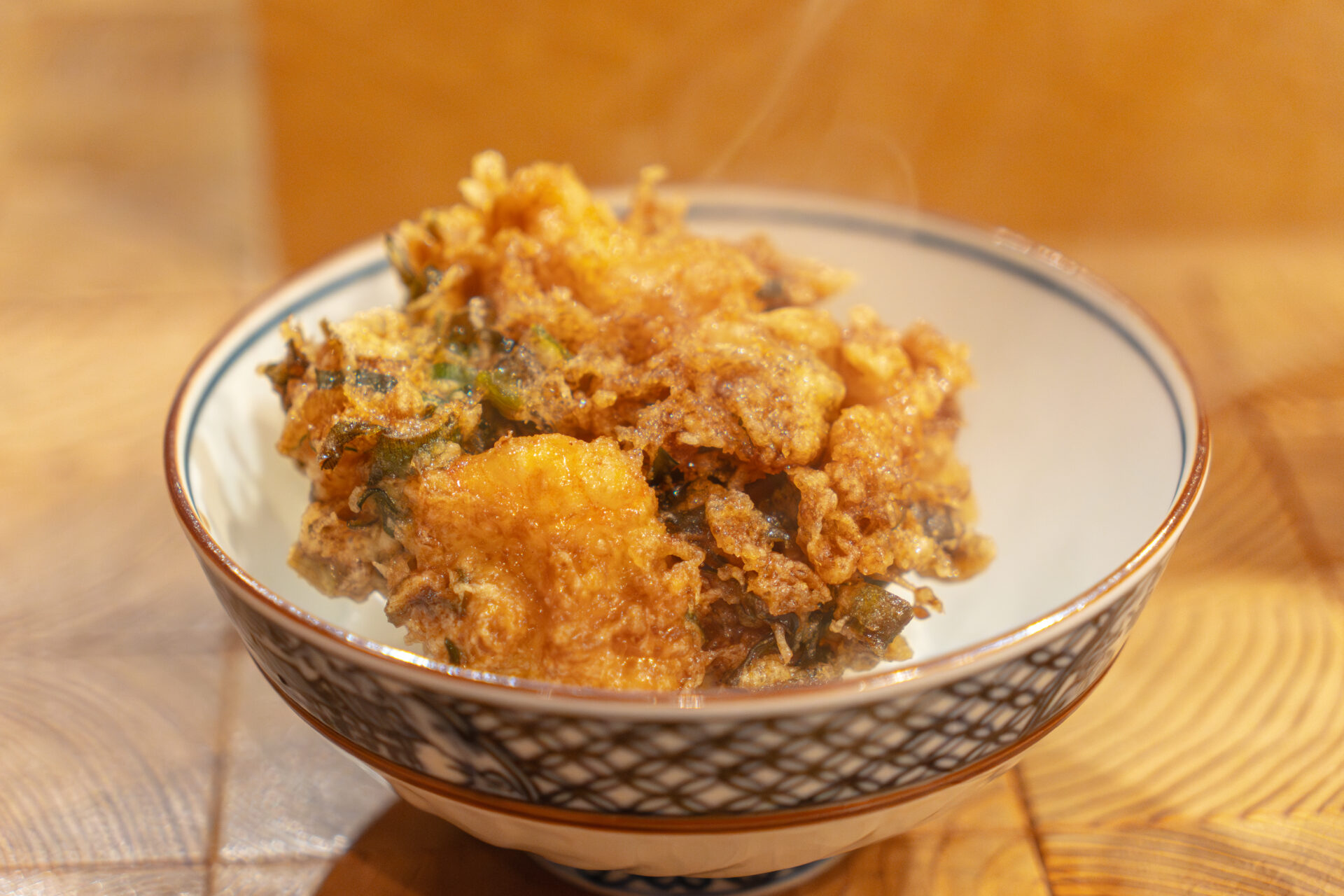
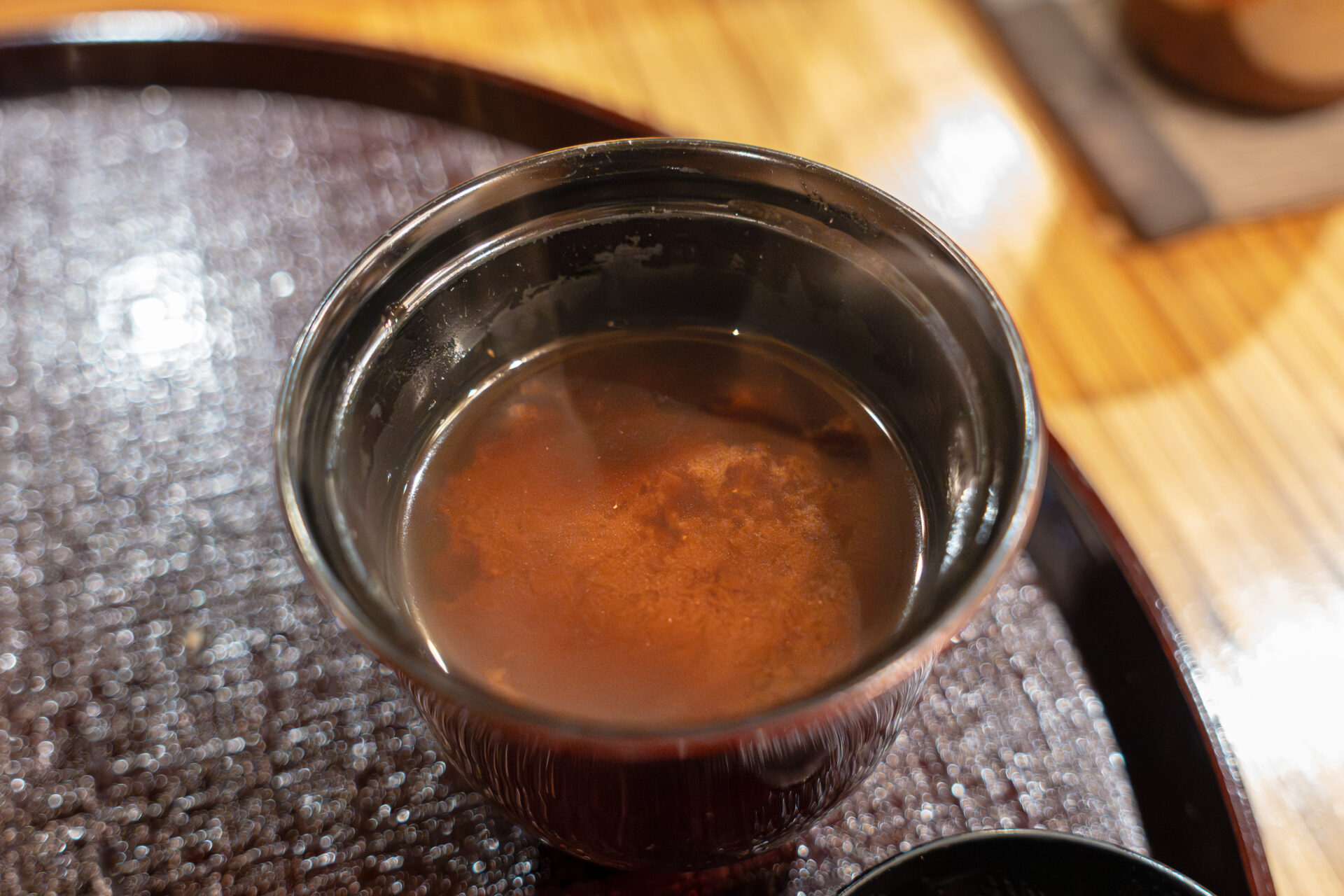
The mentaiko roll offers a spicy, aromatic finish that lingers, ending the meal with a satisfying punch.
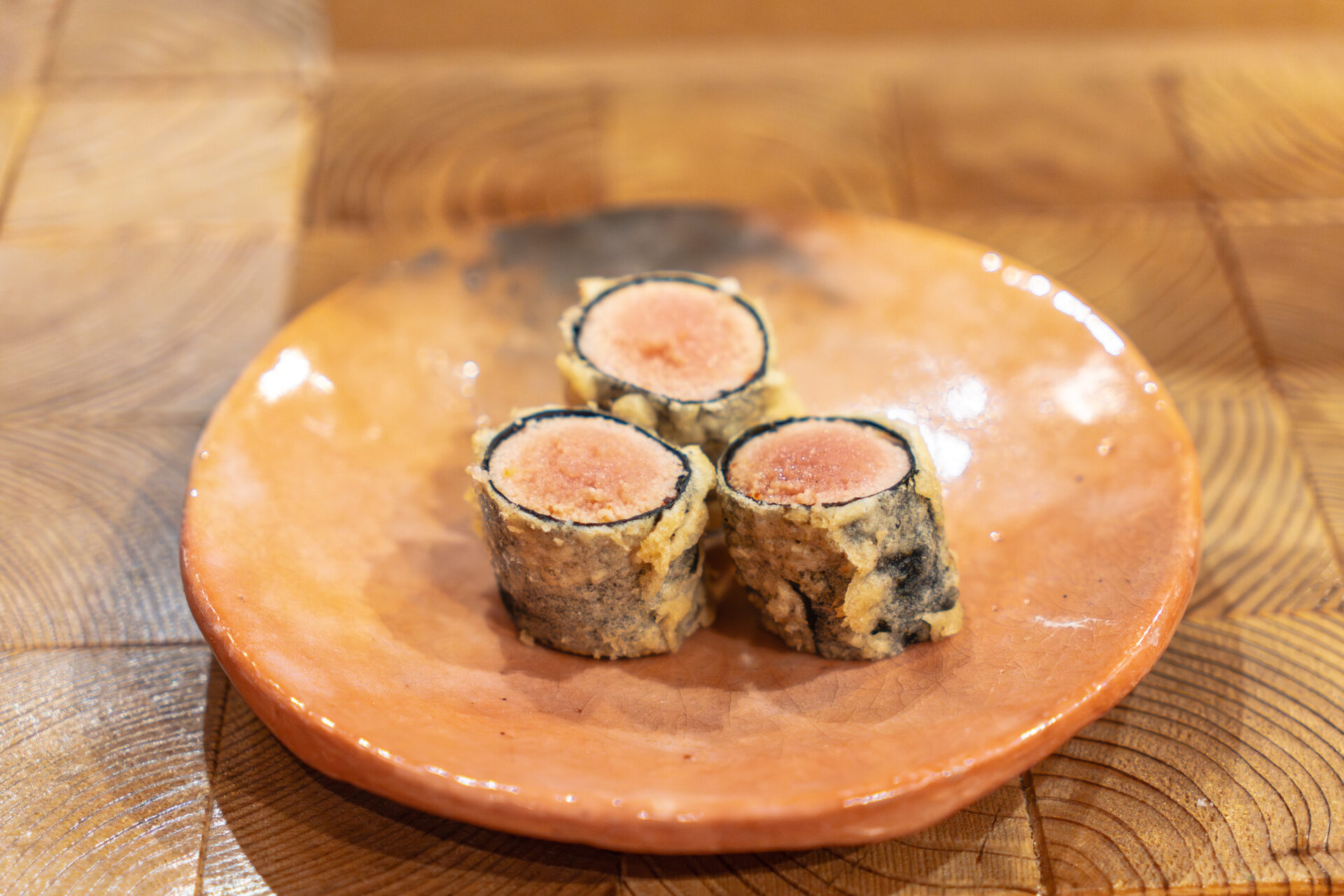
Summary & Impressions
Dining at Tempura Asanuma was a revelatory experience—one that reshapes the very idea of what tempura can be.
Breaking free from the conventions of traditional Edomae style, the course is built around the batter as a central element of flavor. Each dish reflects the careful thought and experimentation of Chef Tsutomu Asanuma, who approaches every ingredient with respect and a spirit of craftsmanship. The result is a one-of-a-kind style that feels both personal and refined.
What stood out most was the approach to seasoning. Rather than relying solely on salt, each ingredient was paired with the most suitable flavor accent: clams and firefly squid were enhanced with aromatic soy sauce and kuro-shichimi; shiitake mushrooms received a delicate post-fry drizzle of soy; scallops were wrapped in fragrant nori; while lily bulbs were served with no seasoning at all, letting the natural sweetness shine.
Nothing was excessive or showy—yet each bite revealed surprising depth, born from Chef Asanuma’s unique sense of balance and restraint.
Beyond the food, everything from the pace of the meal and the visual presentation to the use of space and the elegant counter contributes to a coherent world—one shaped entirely by Asanuma’s aesthetic.
Toward the end of the meal, when the freshly fried anago was sliced before me, the sound of the knife, the rising steam, and the aroma created a moment that went beyond technique—it carried a sense of conviction.
There is no flashiness here, only a quiet devotion to craft. A flexible approach that even reconsiders the role of seasoning itself. That, perhaps, is why I found myself thinking: “I’d love to return when the seasons change.”
Rooted in Nihonbashi yet clearly standing apart, Tempura Asanuma is not just delicious—it’s a place you want to recommend to anyone in search of tempura that lingers in the heart.
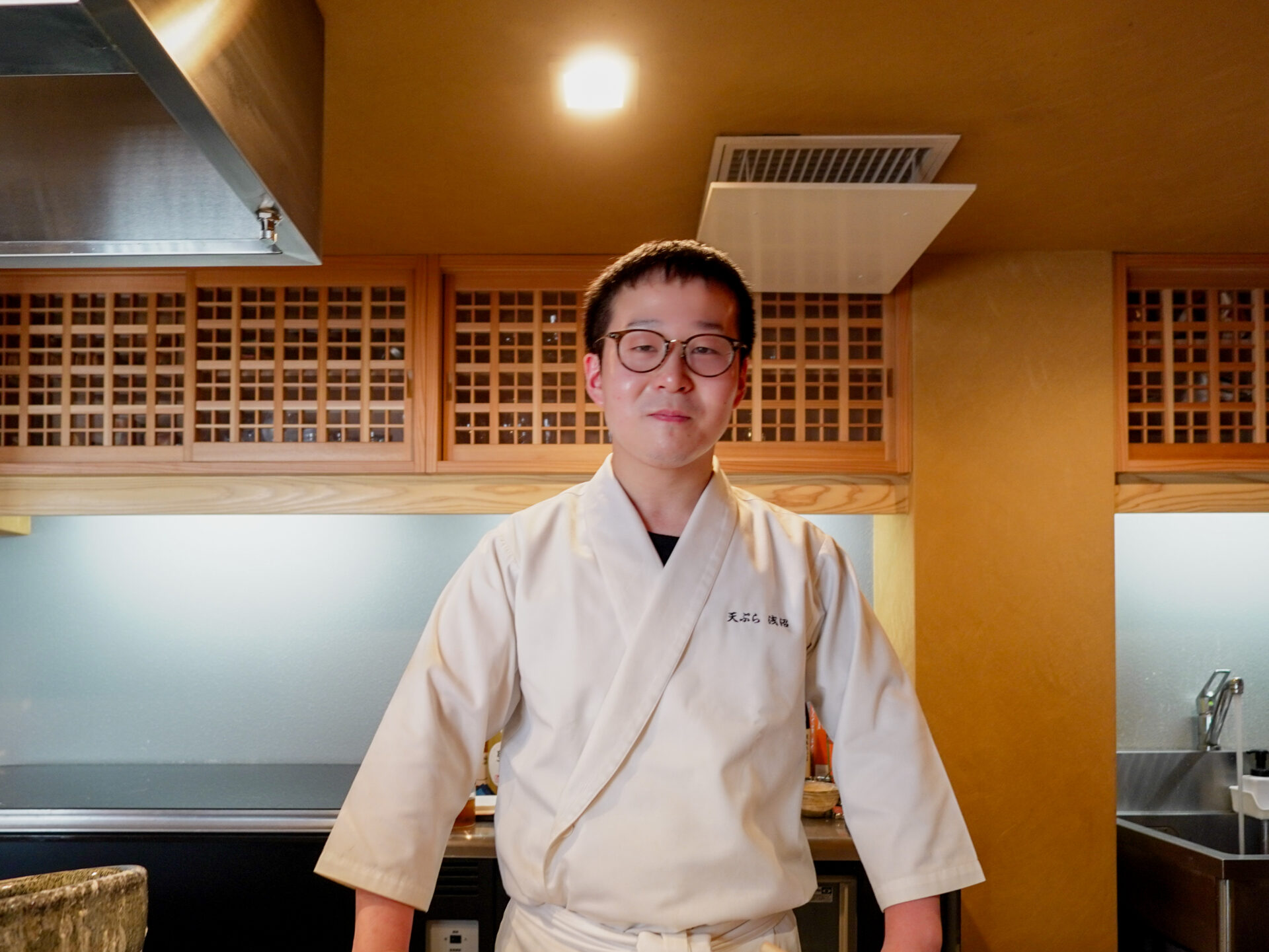
Reservations & Access
Reservations (Important Notice)
Currently, Tempura Asanuma is not accepting reservations by phone or online.
There is no announced date for when bookings will reopen, so guests are advised to keep an eye on the official Instagram account or website for the latest updates.
Access
Address:
6F, Ordin Nihonbashi Building, 2-10-11 Nihonbashi, Chuo-ku, Tokyo
Nearest stations:
-
1–2 minutes on foot from Nihonbashi Station (Tokyo Metro Ginza Line, Tozai Line / Toei Asakusa Line), Exit C4 or C6
-
Also within walking distance from Kayabacho Station and Mitsukoshimae Station
Take the elevator to the 6th floor, where a white noren curtain and a wooden sign quietly greet you.
Hours & Closures
-
Lunch: 12:00 PM – around 3:00 PM
-
Dinner: 6:00 PM – around 9:00 PM (or until the course ends)
-
Closed: Wednesdays
Note: Additional irregular closures may apply. Please check Instagram for the latest schedule.
- TAGS

